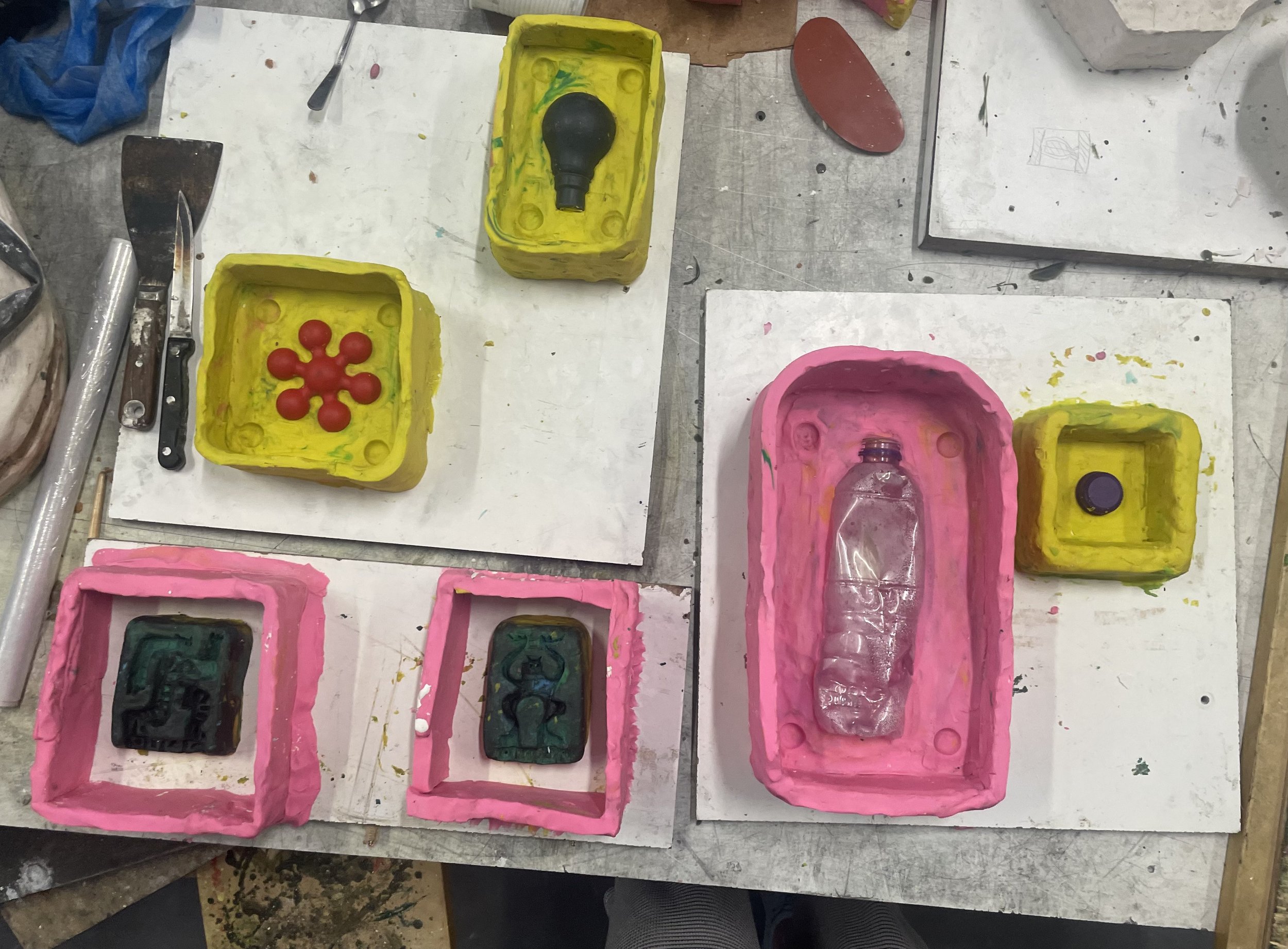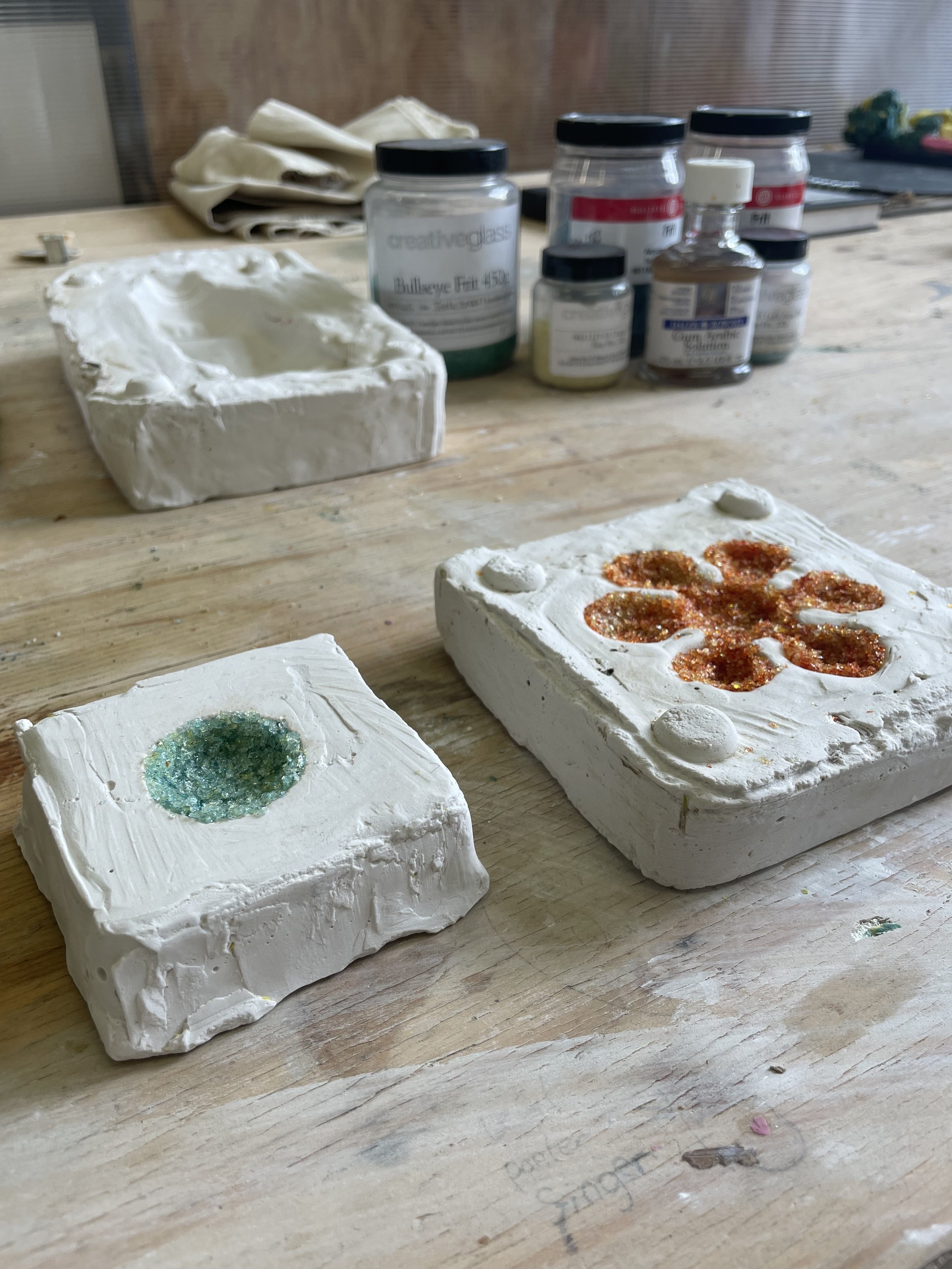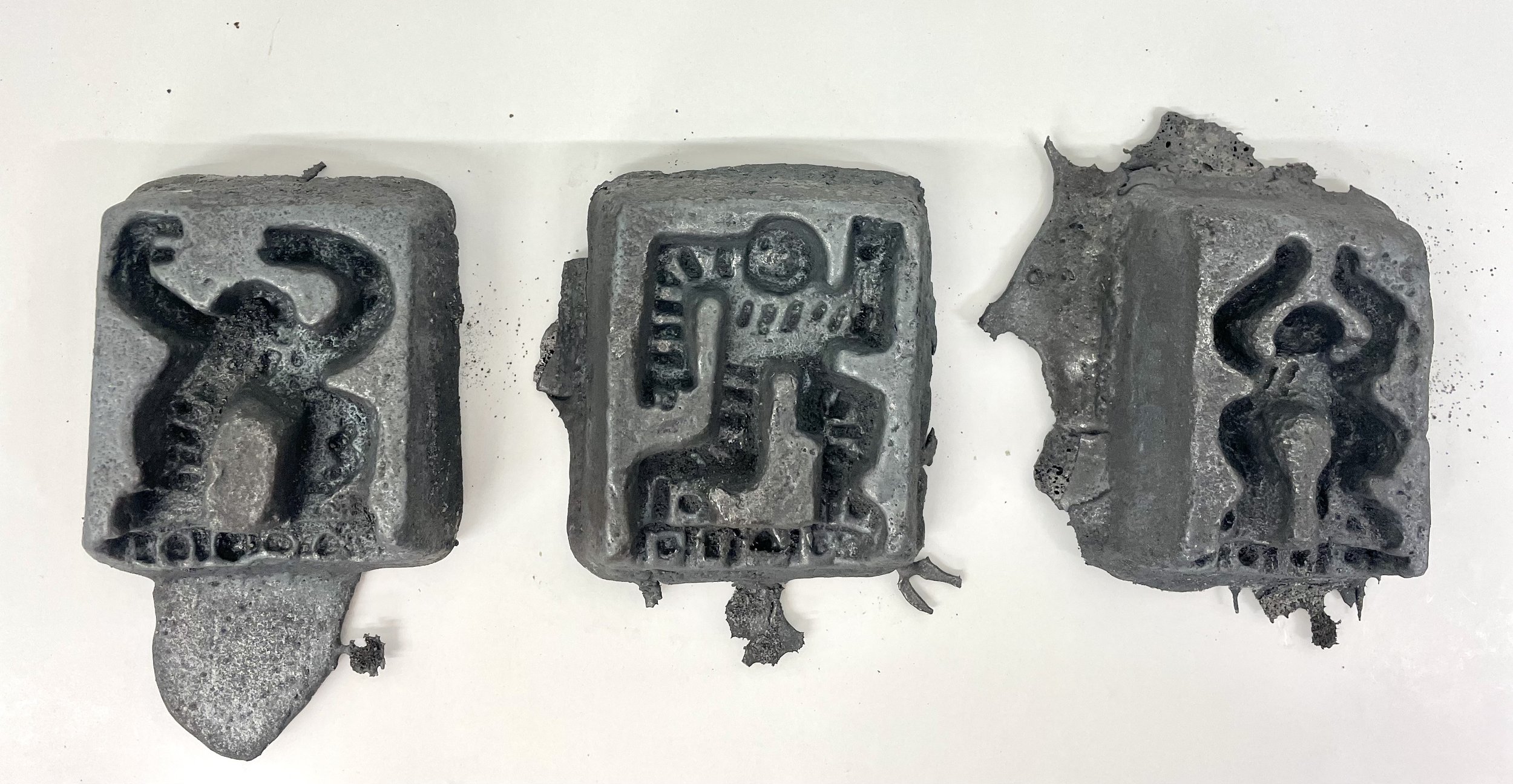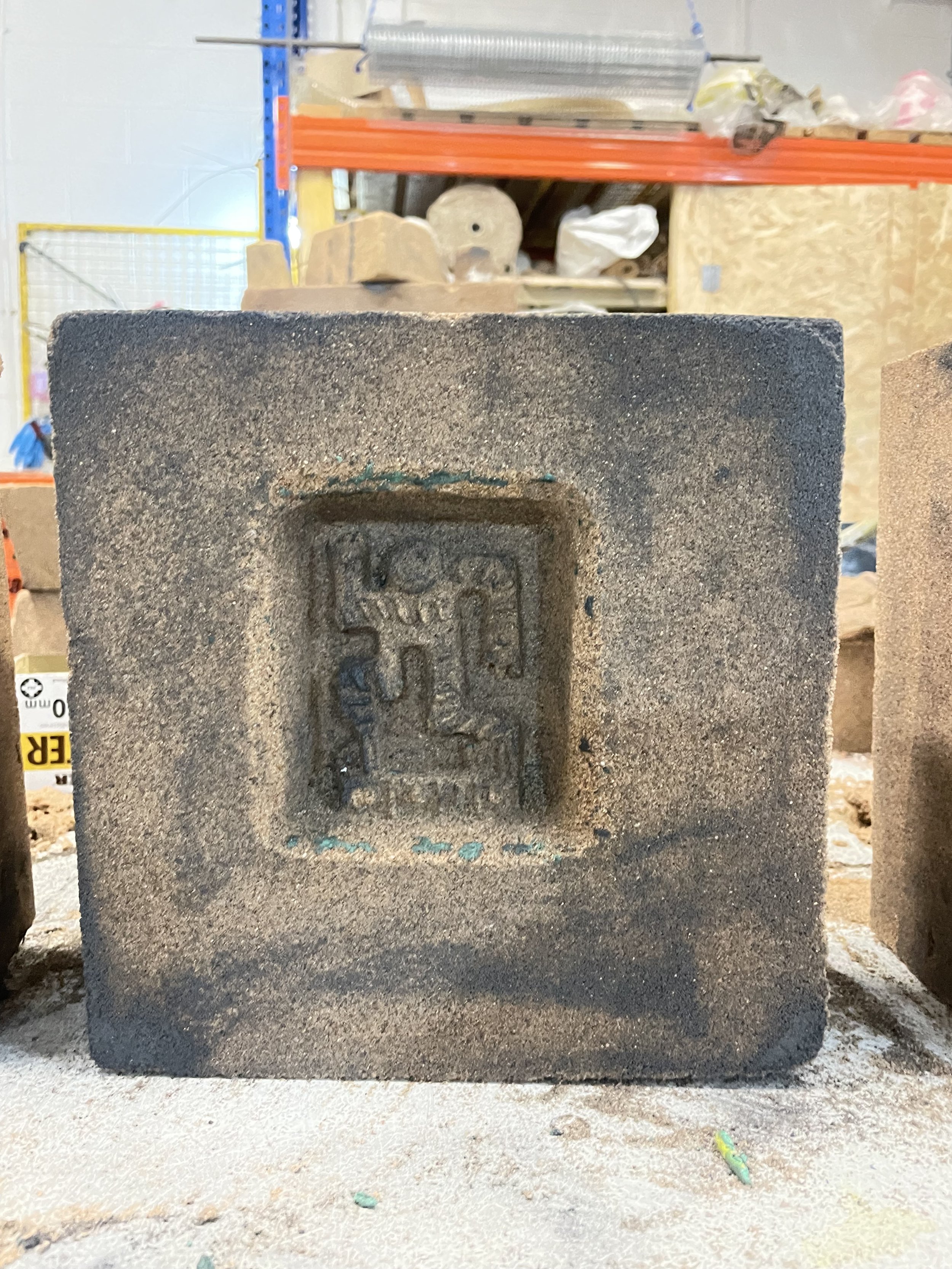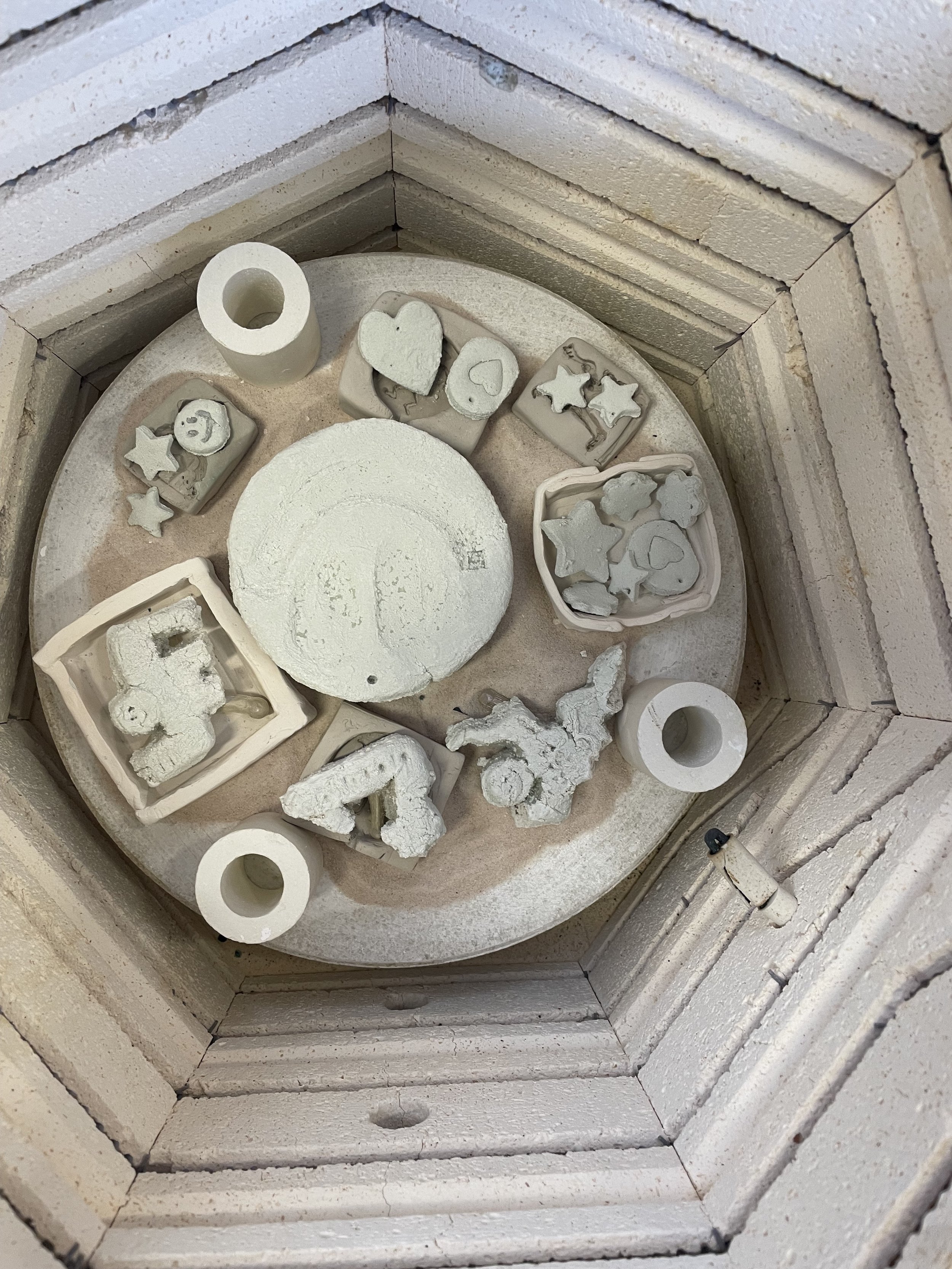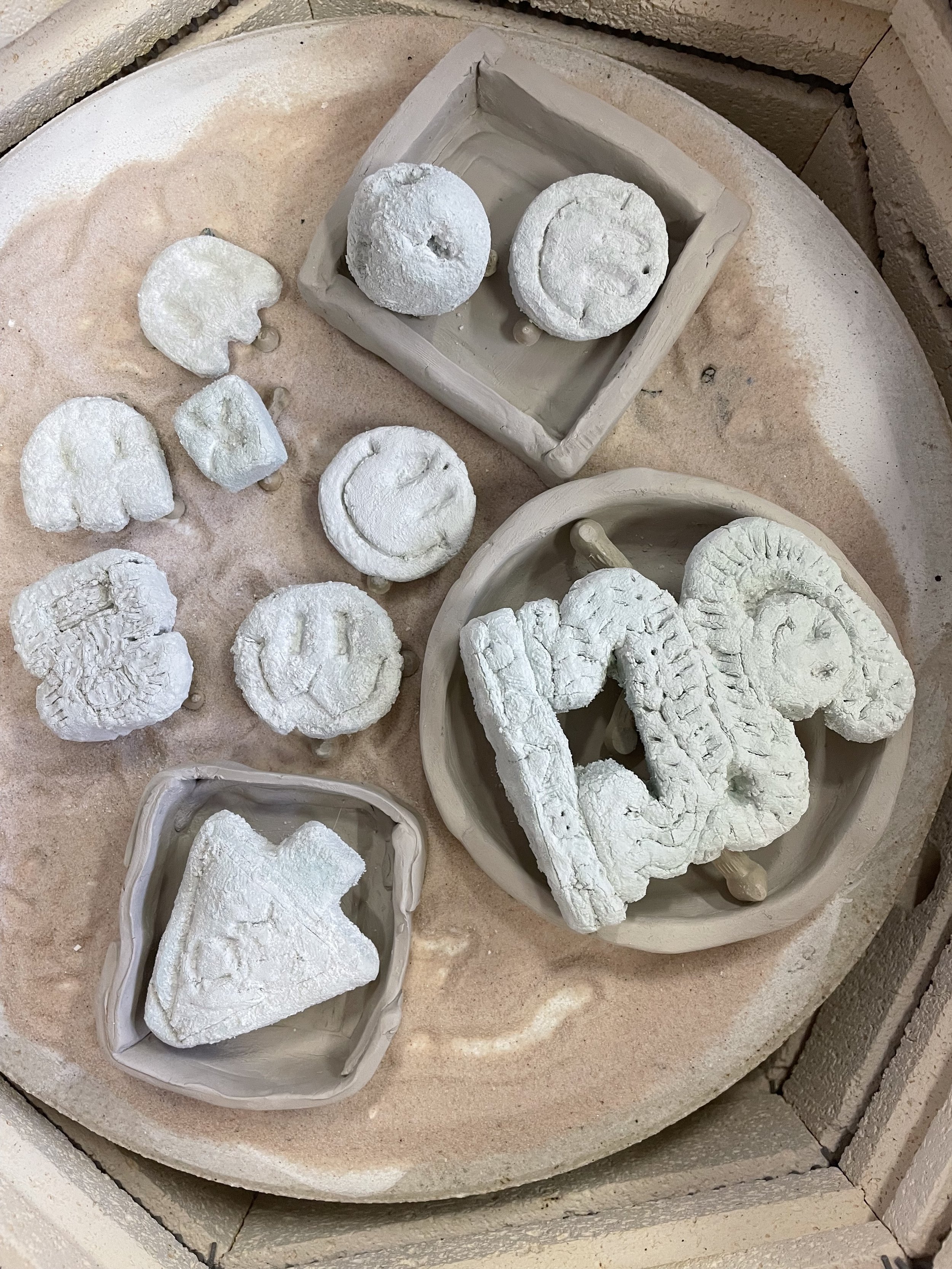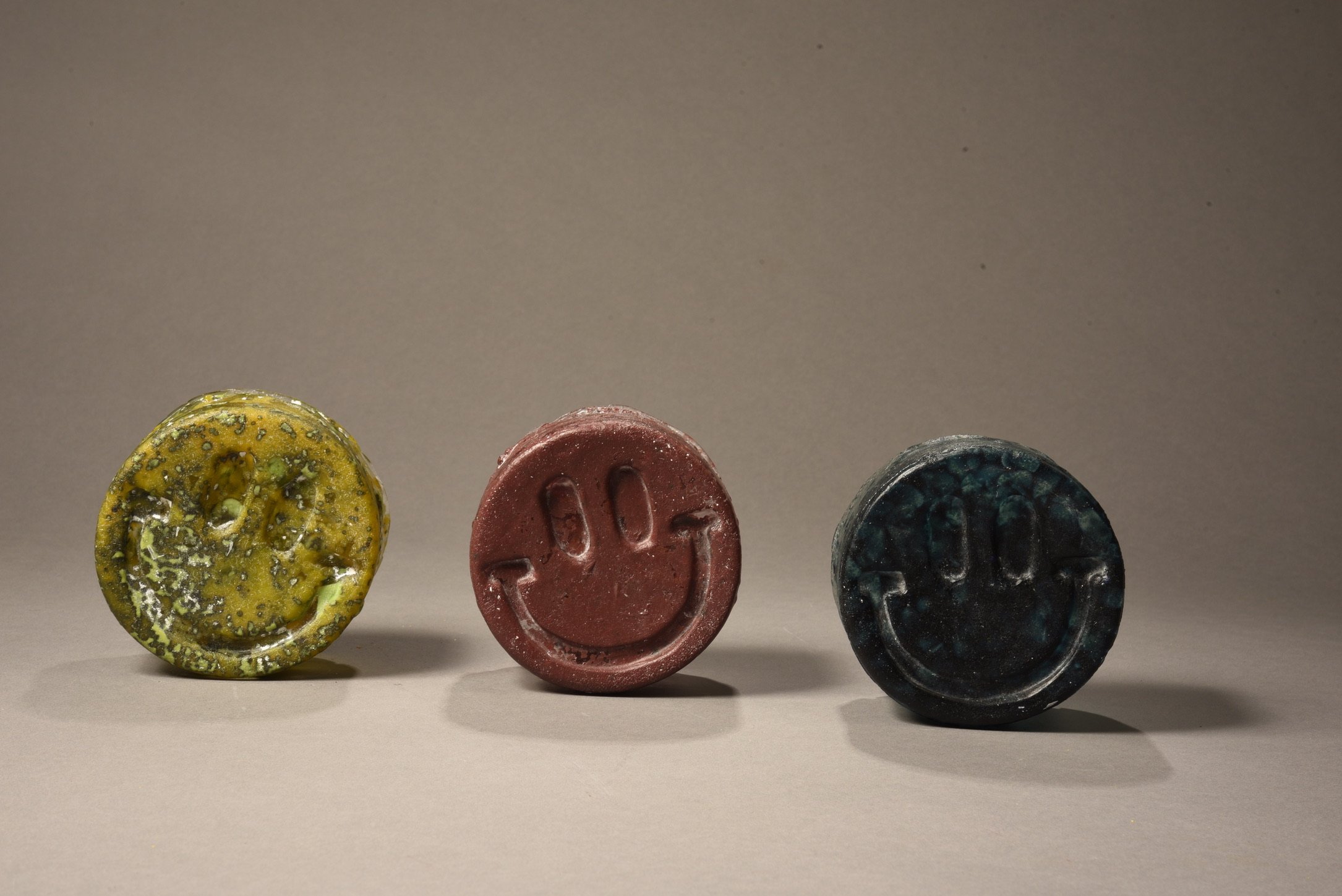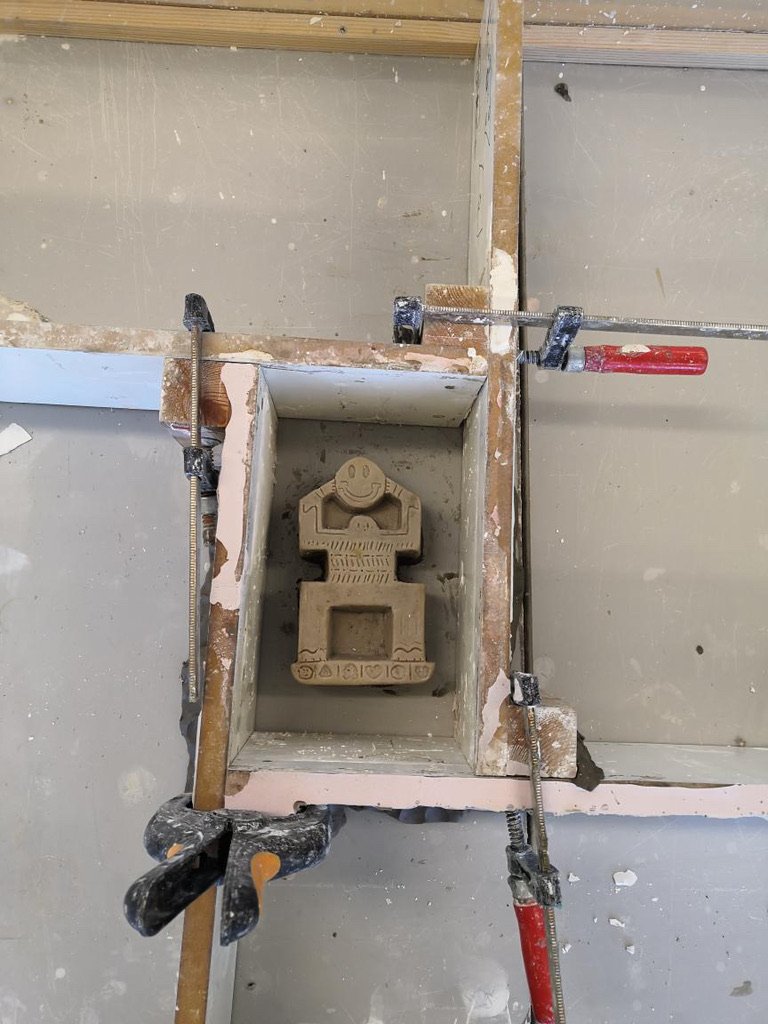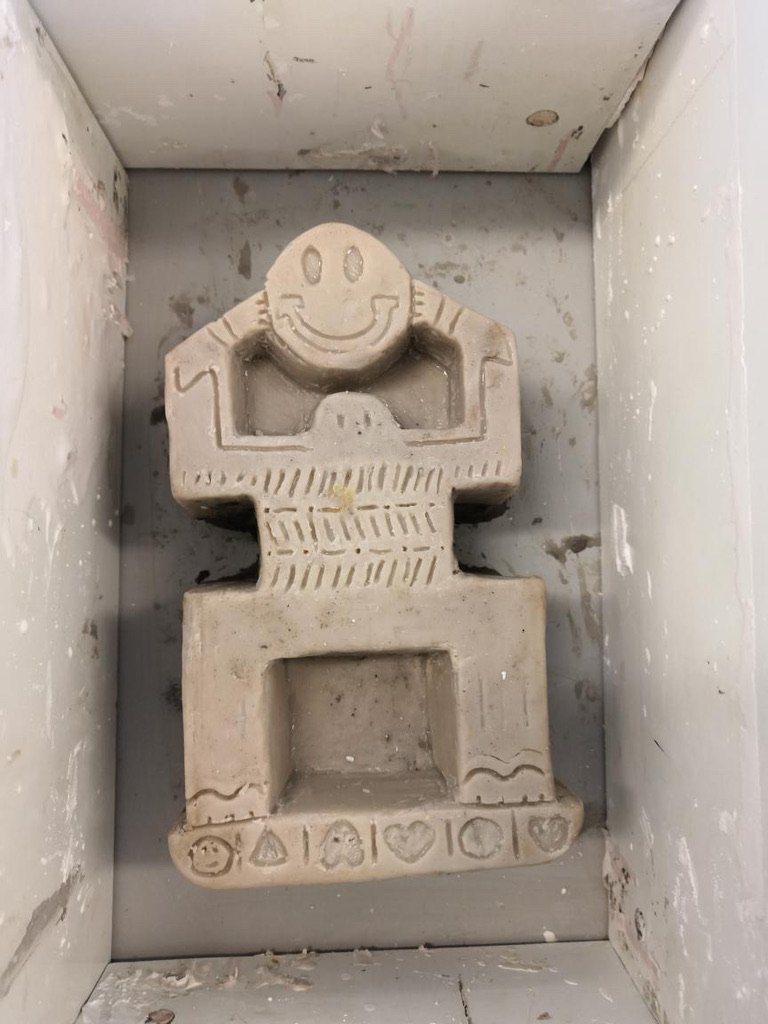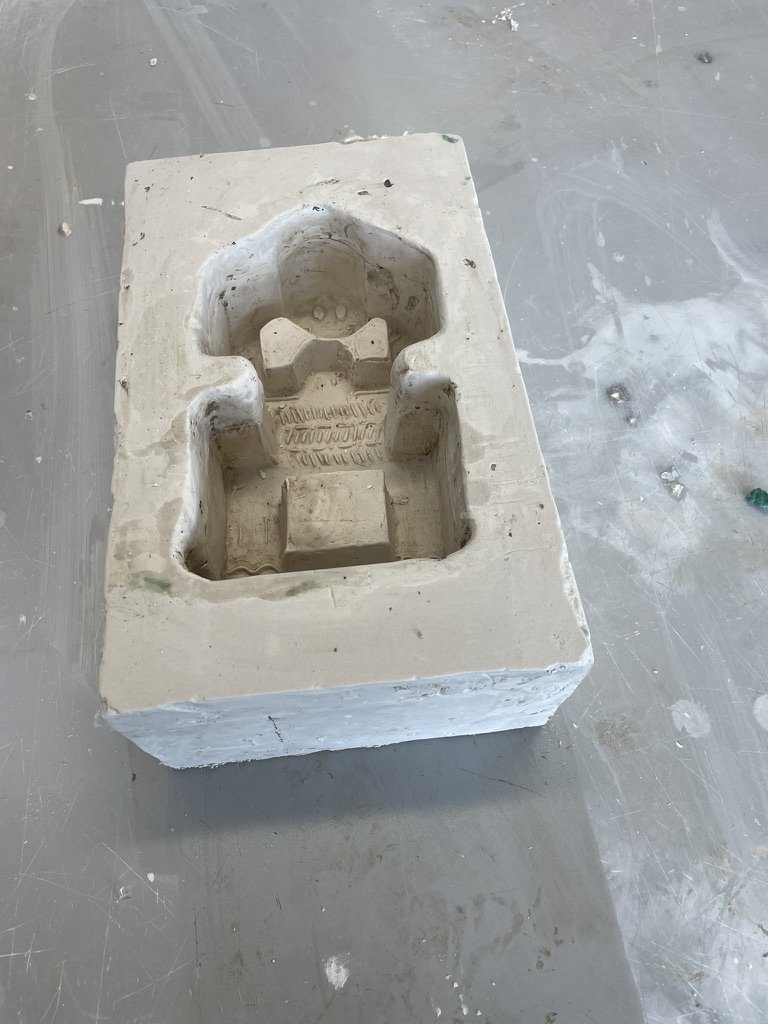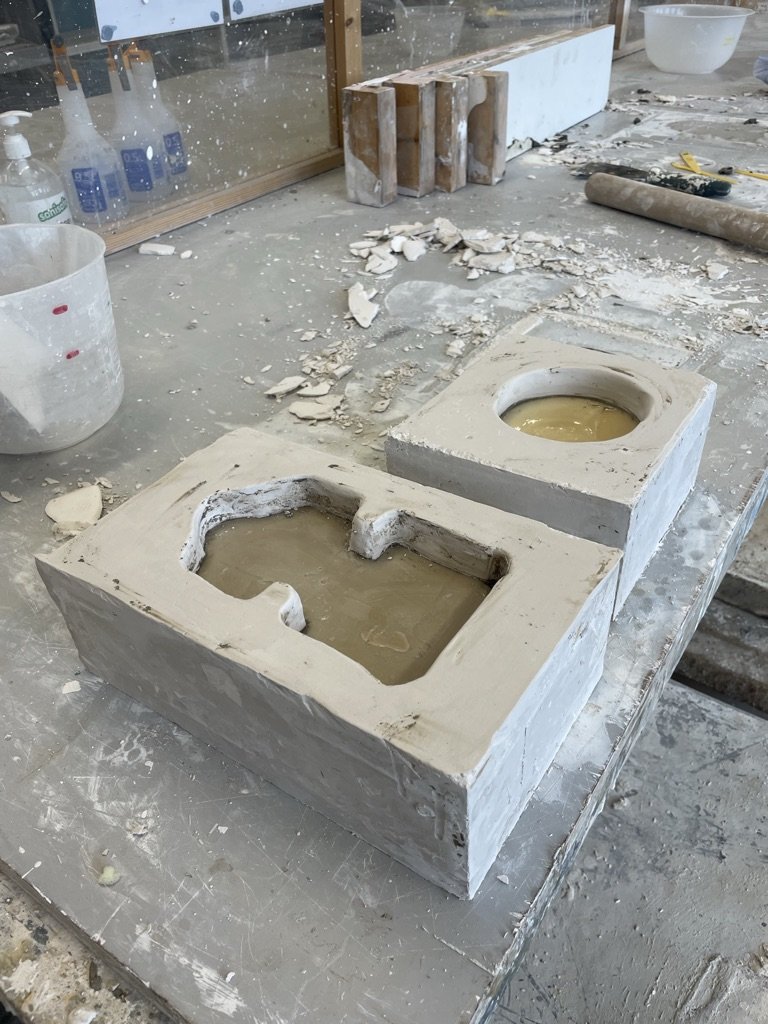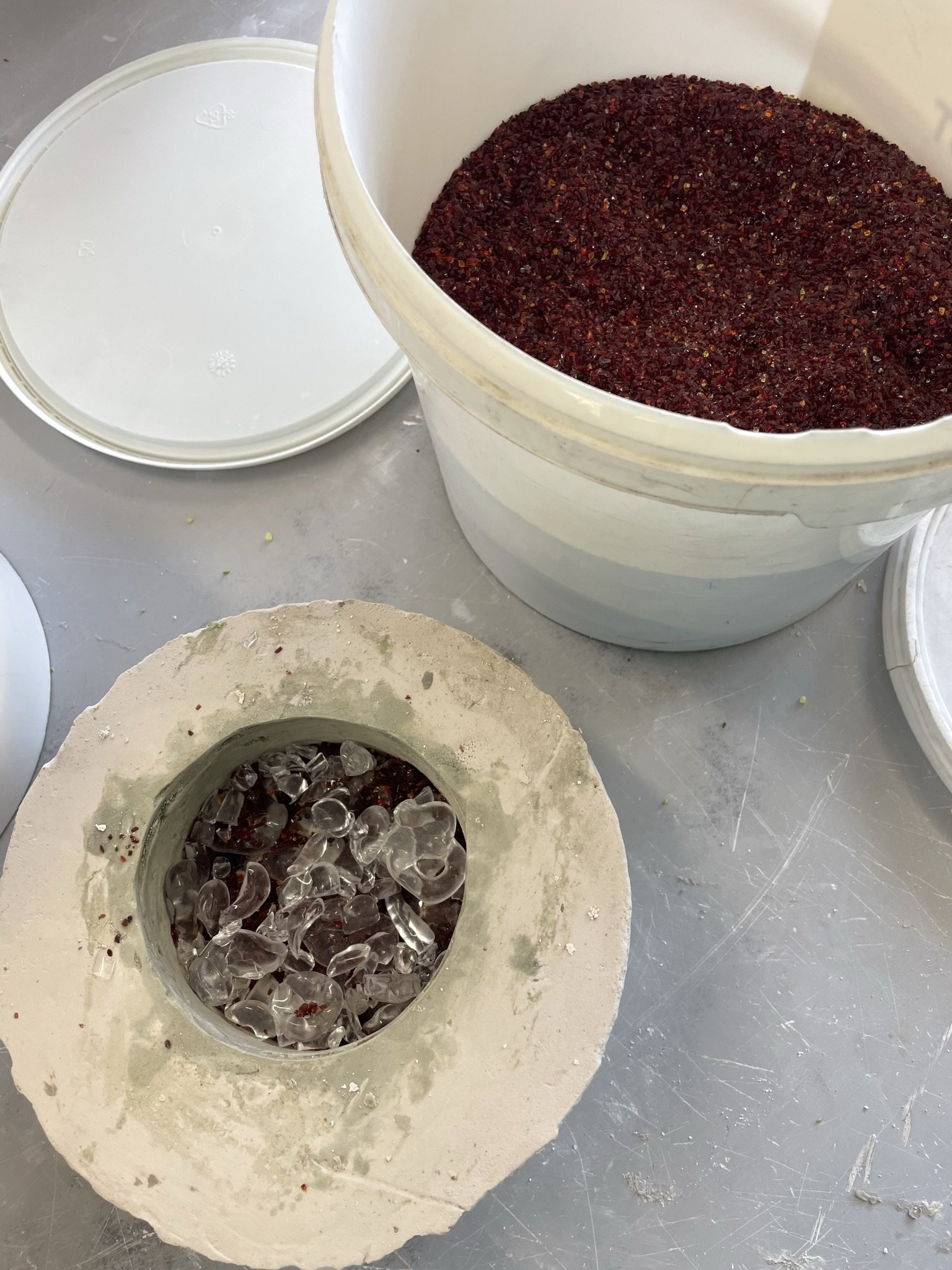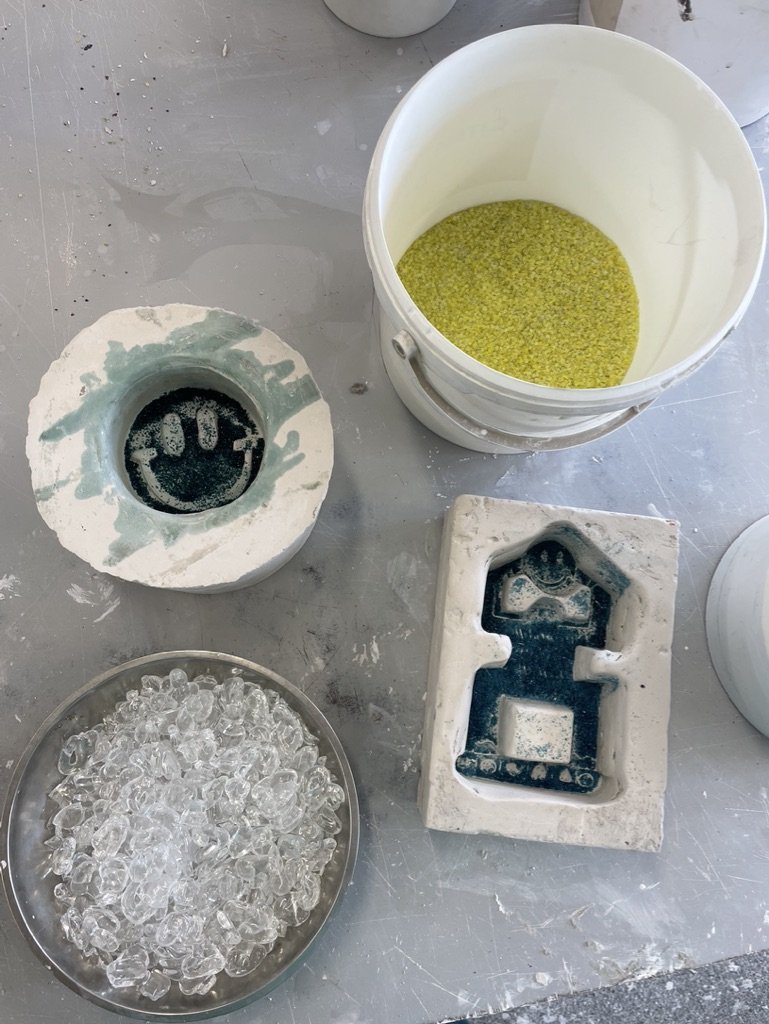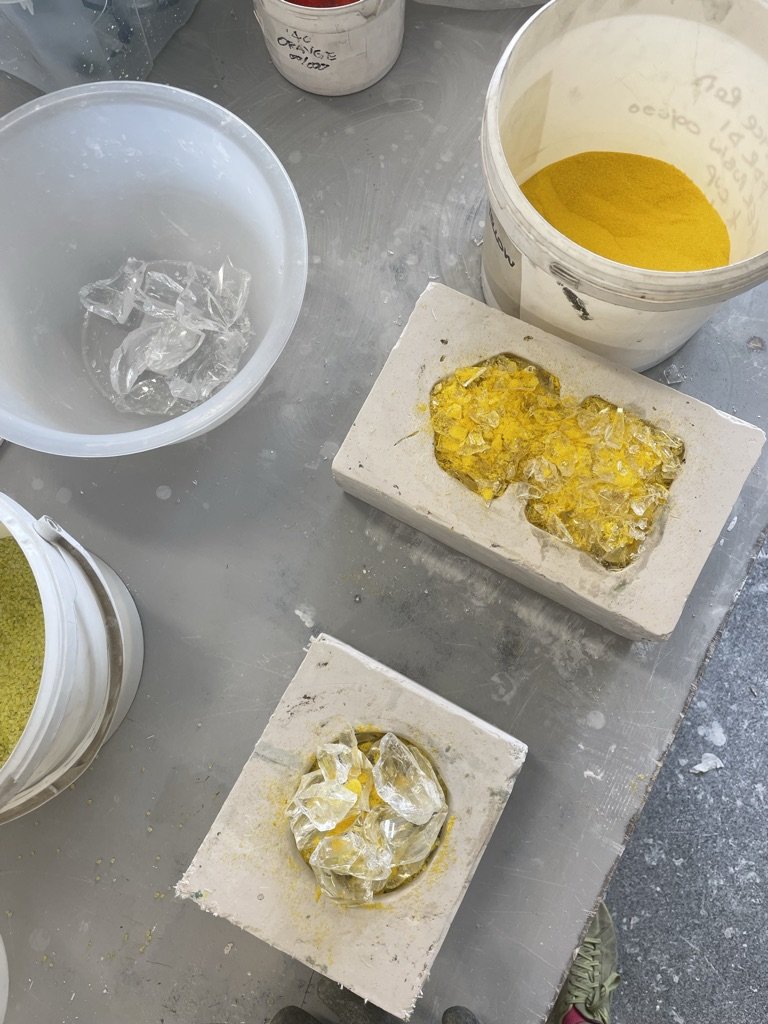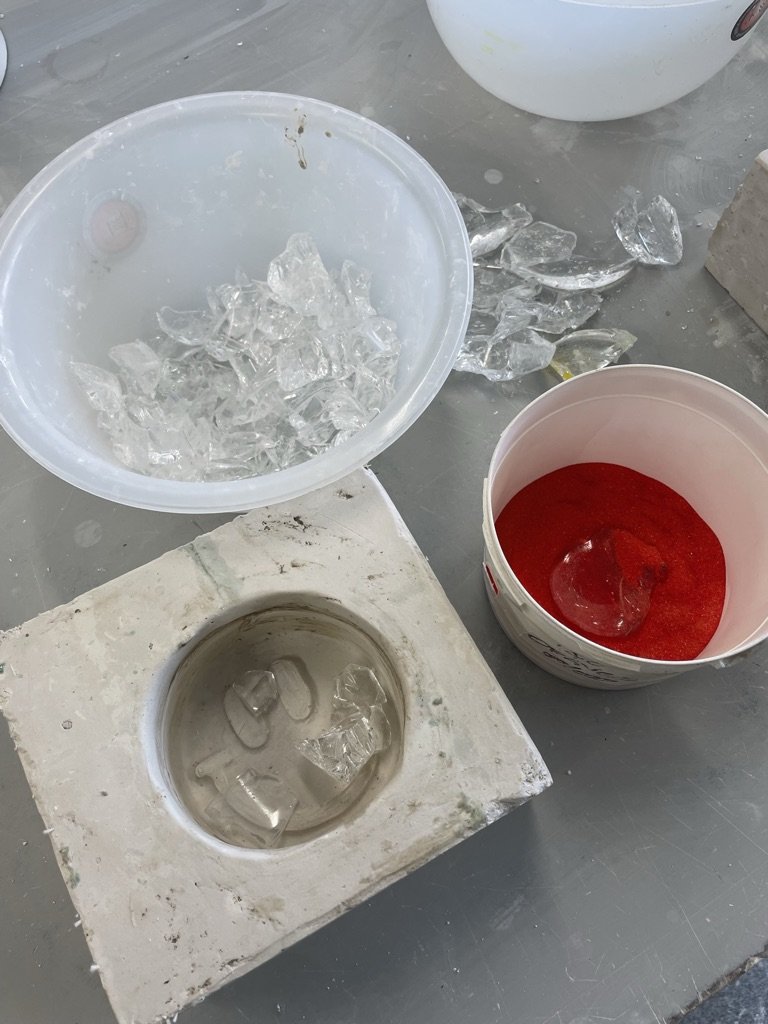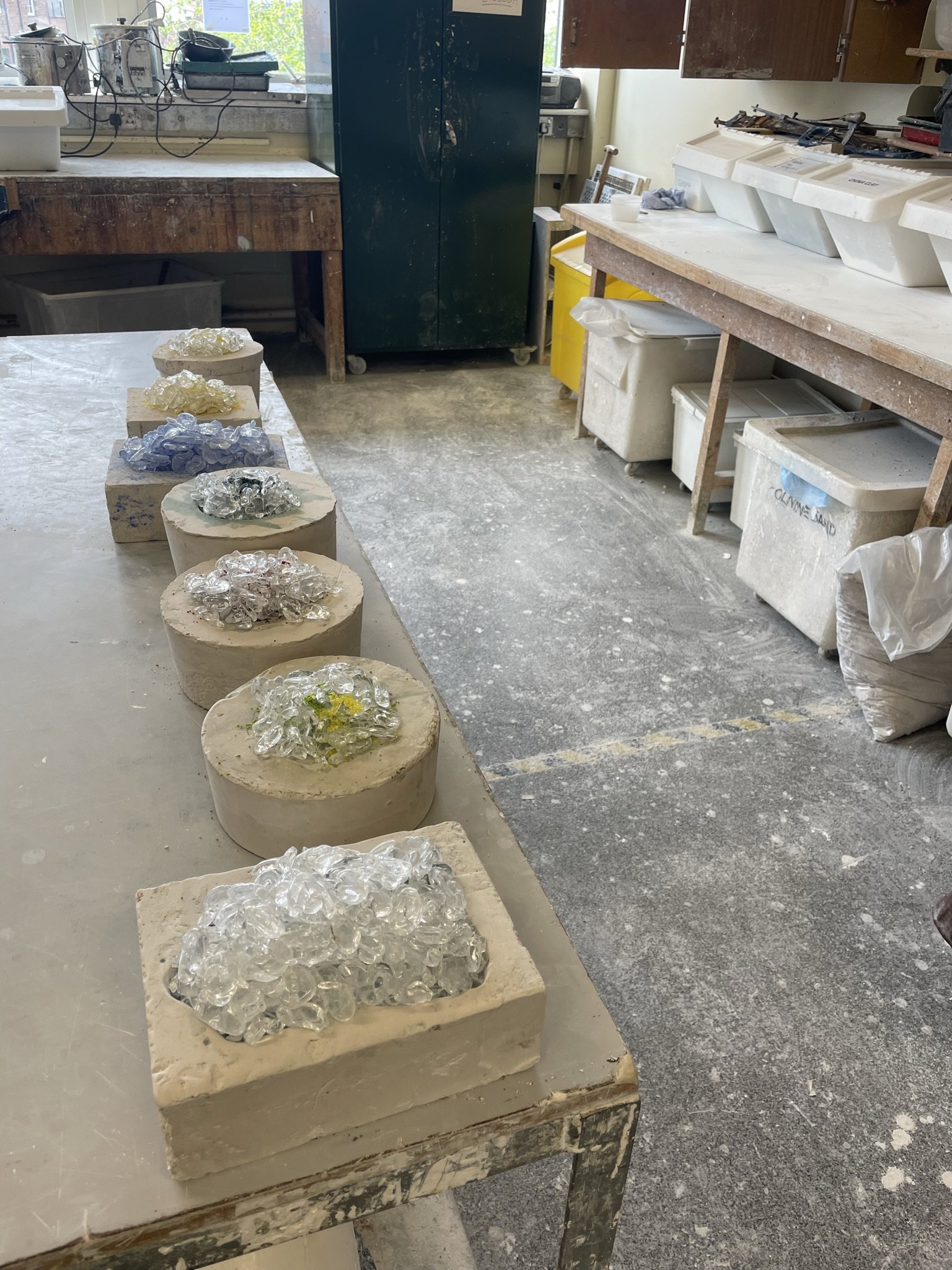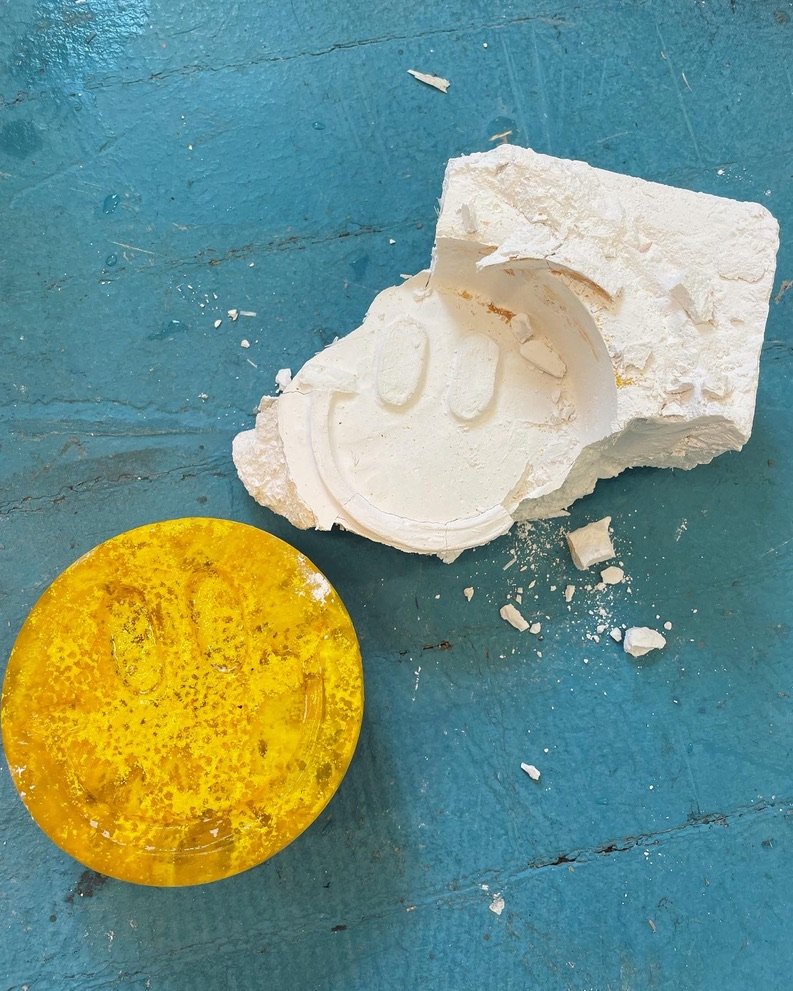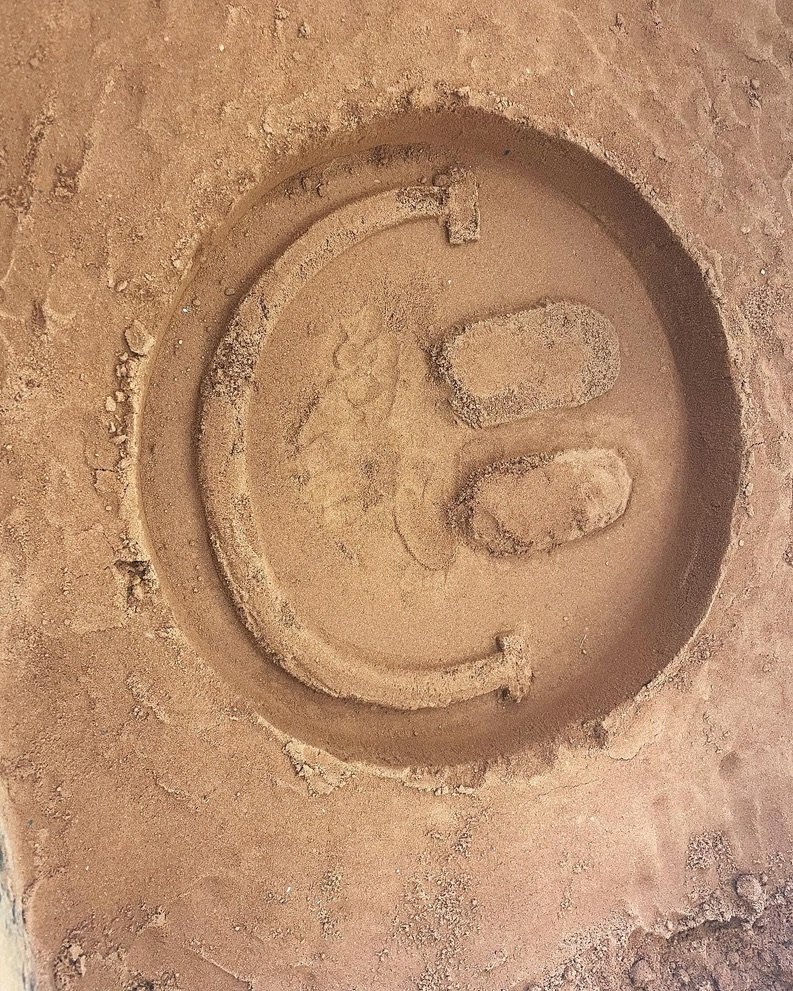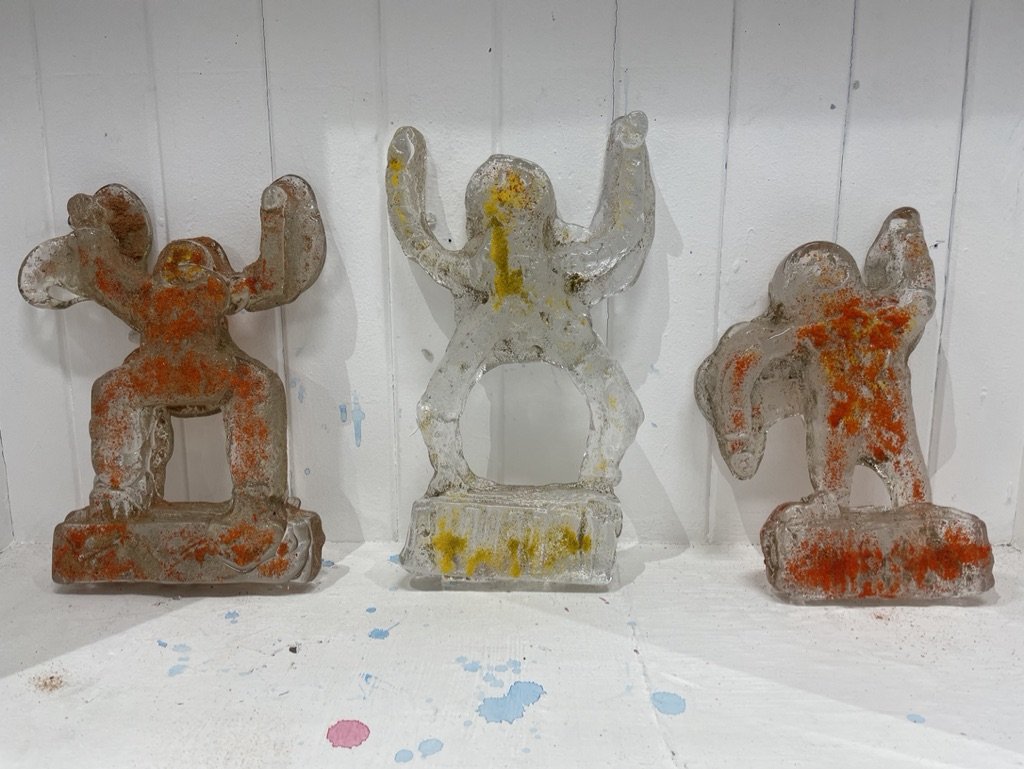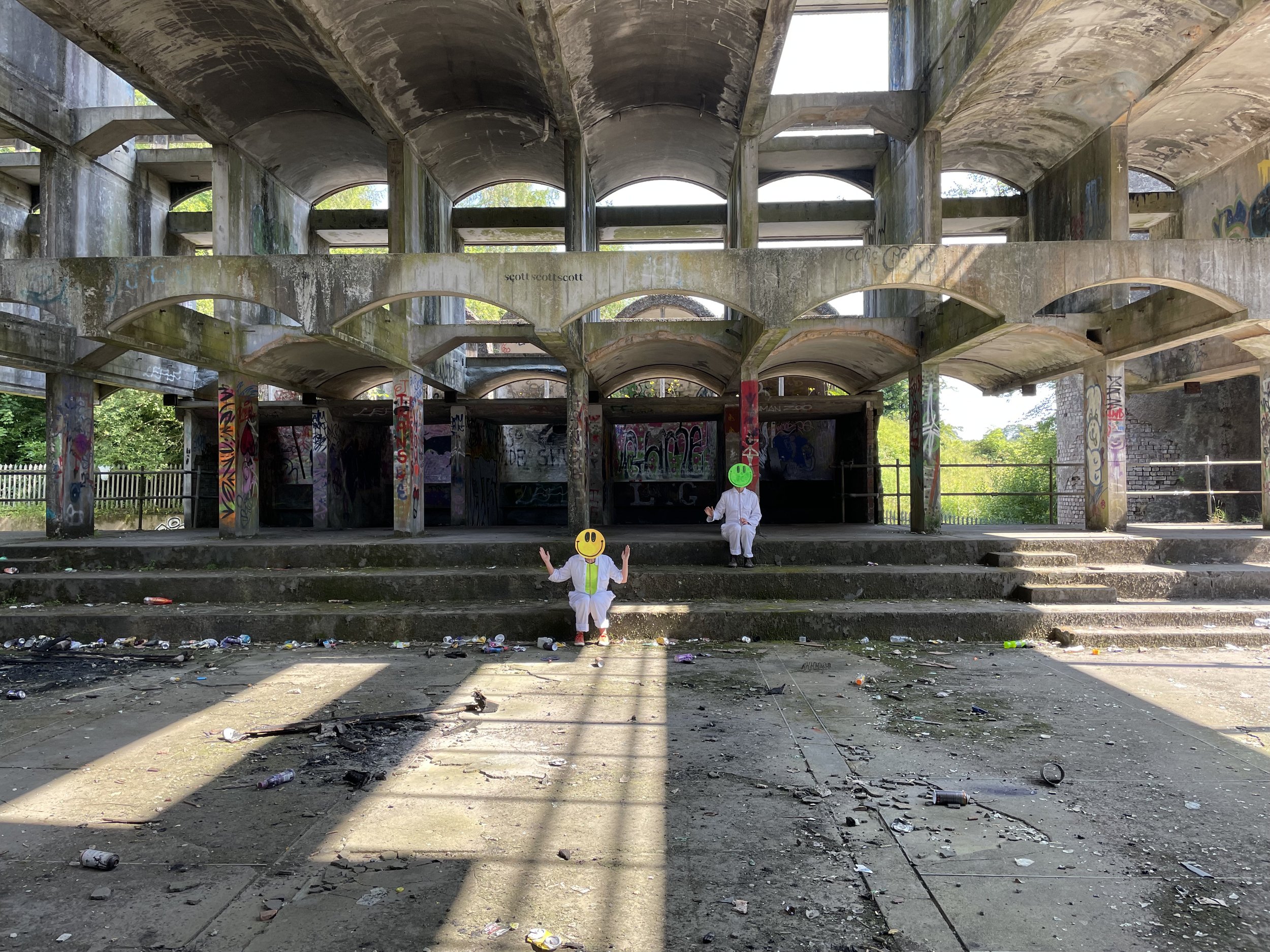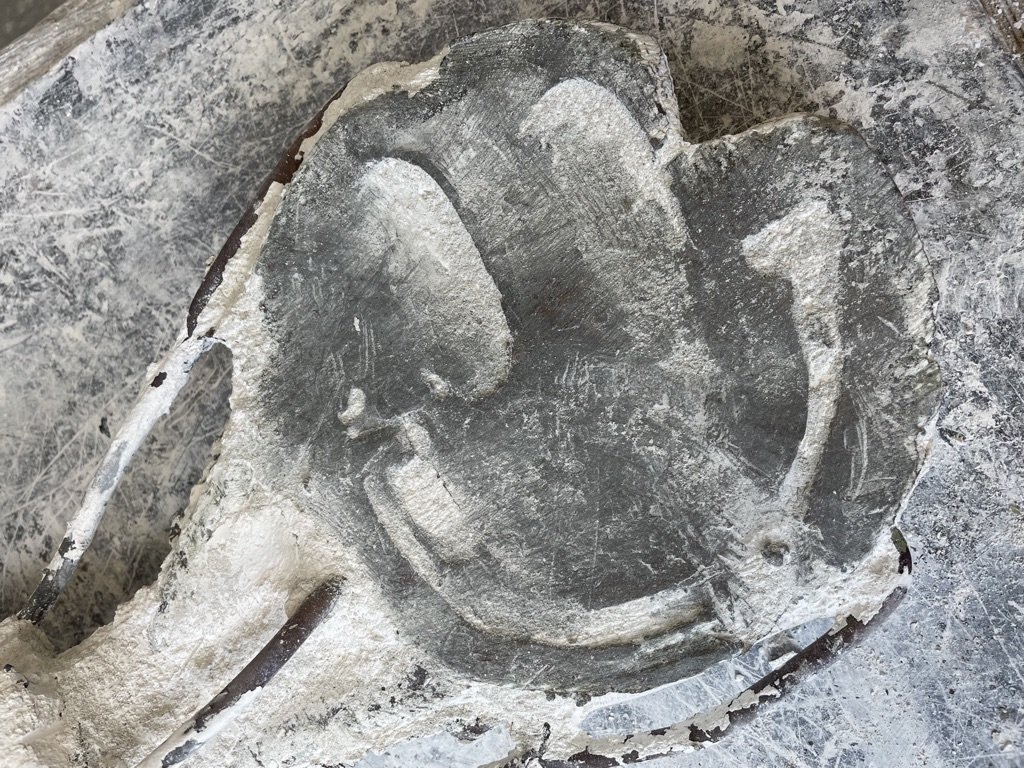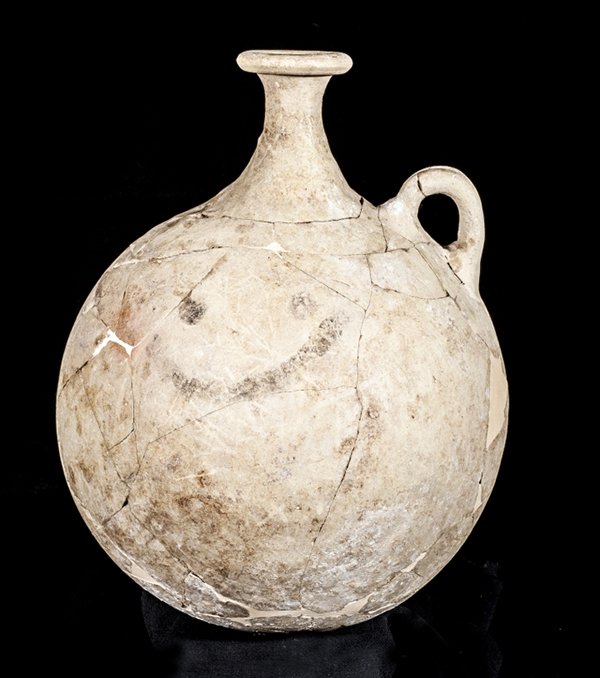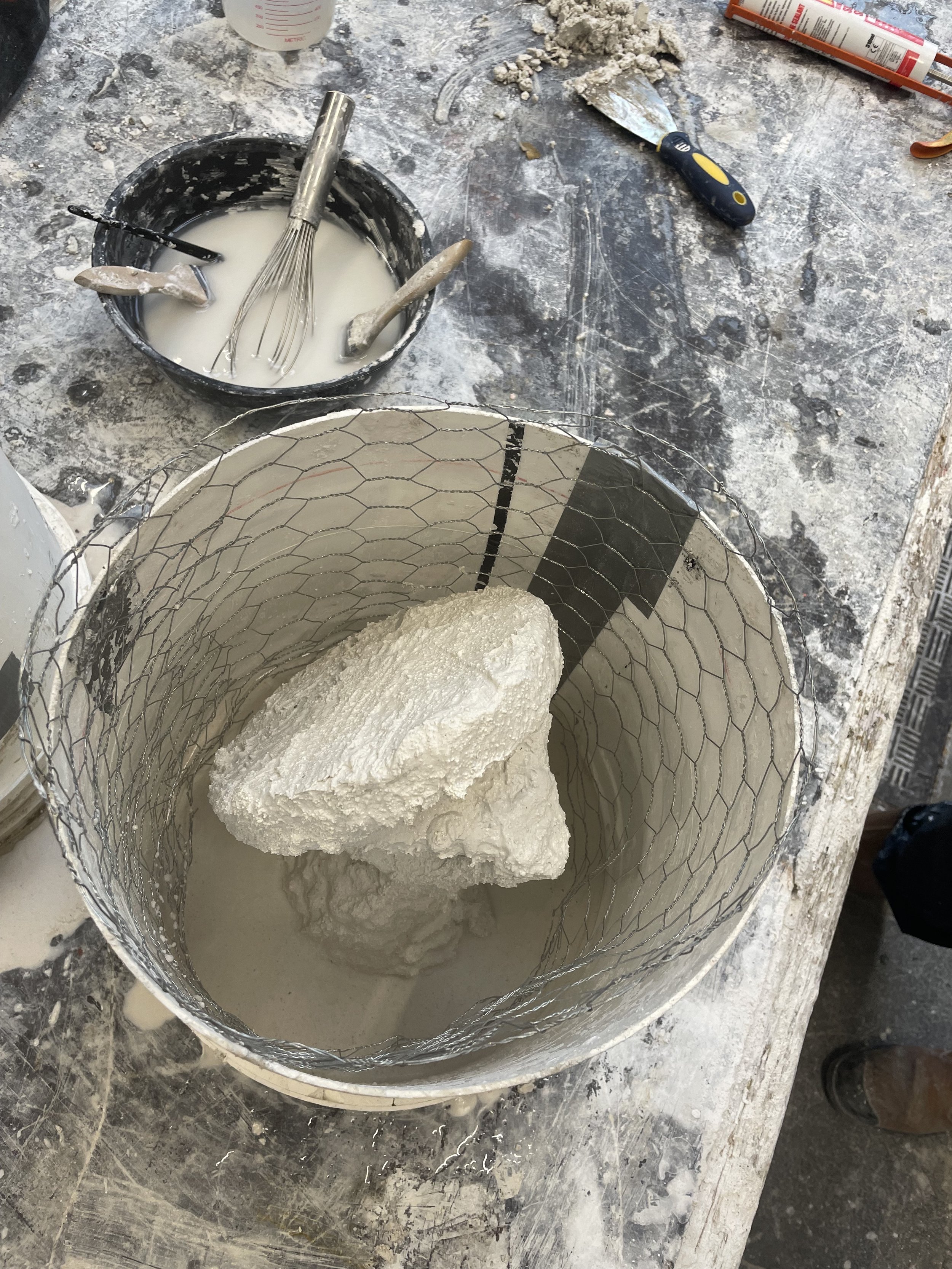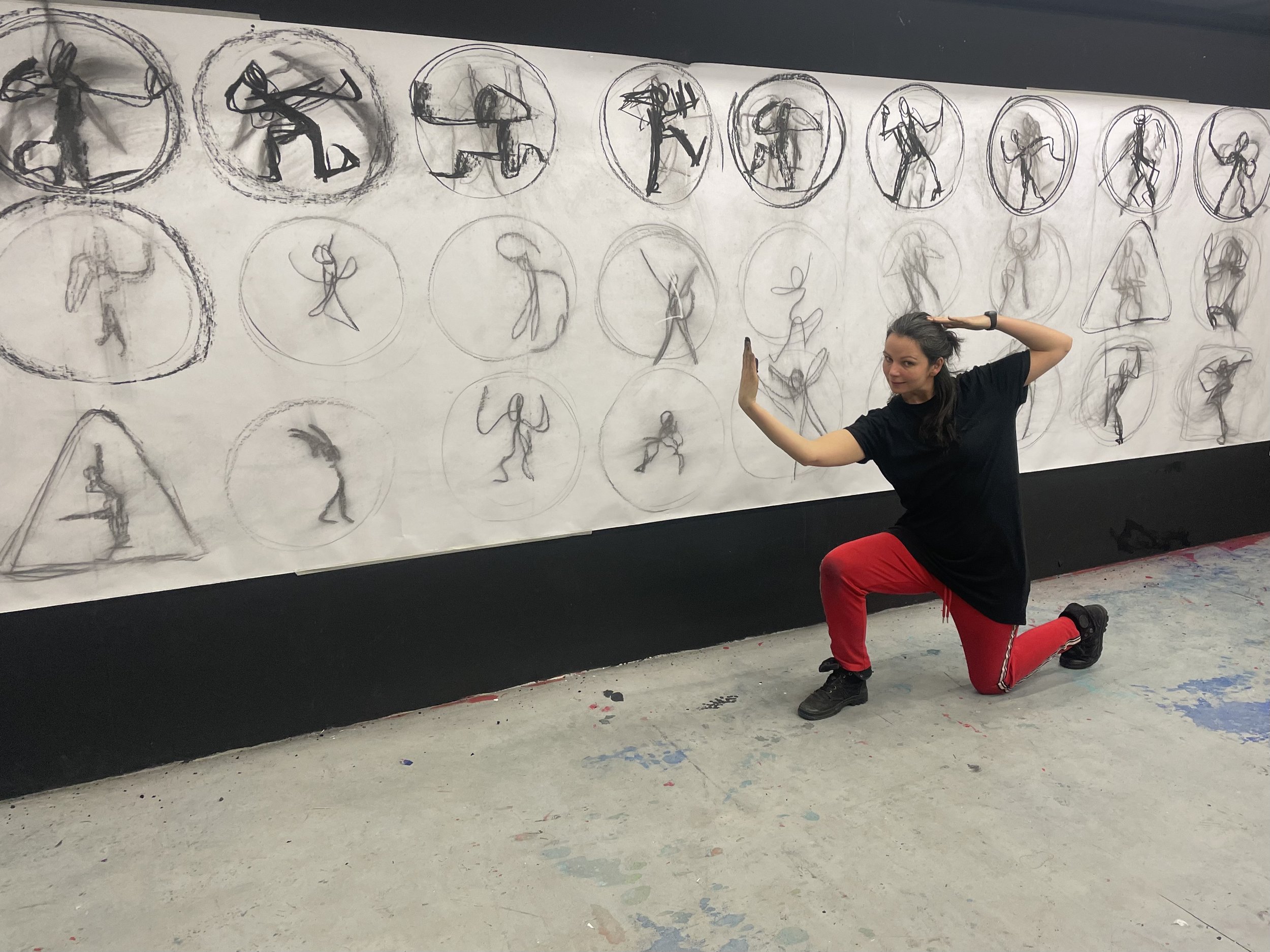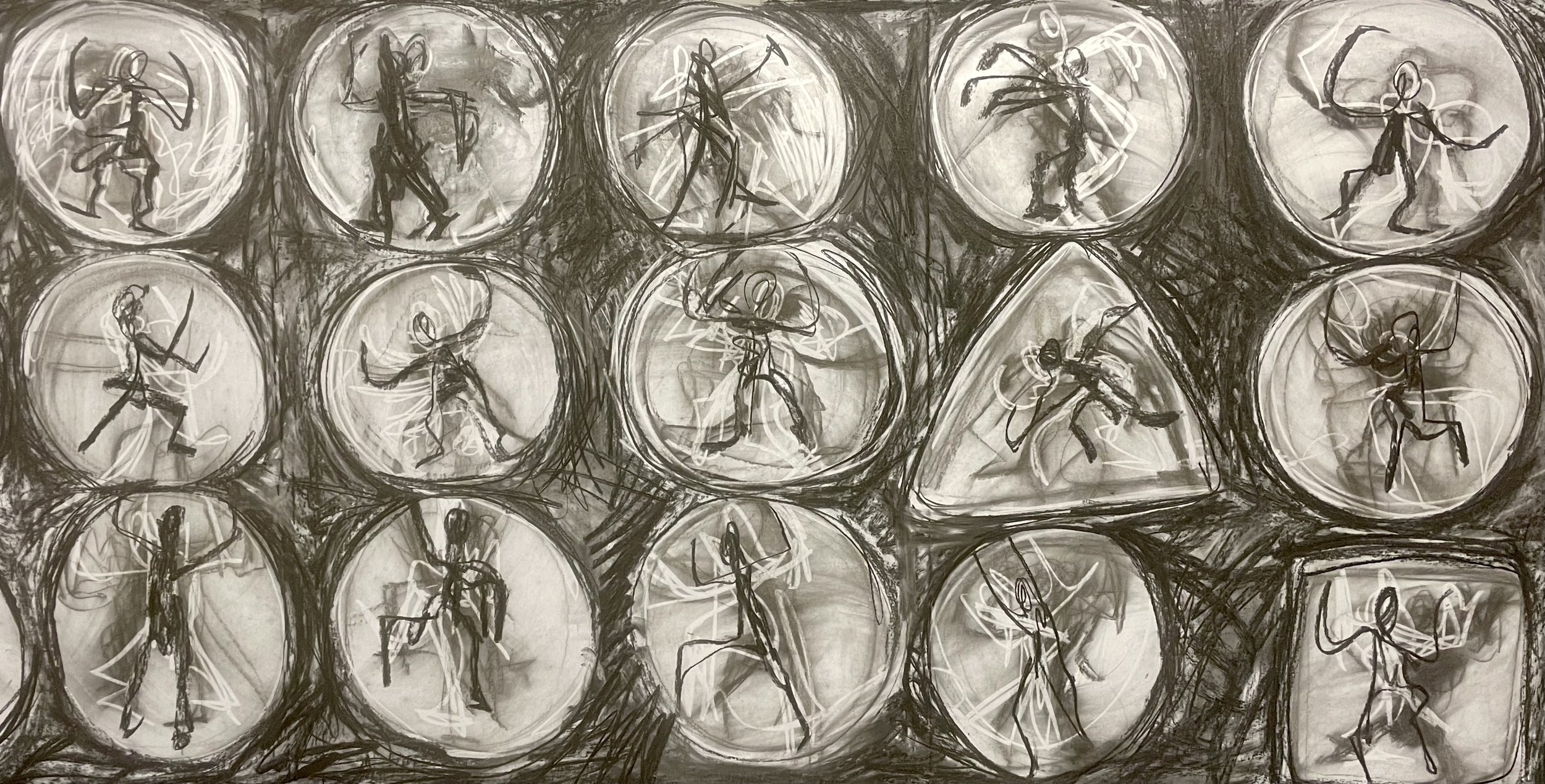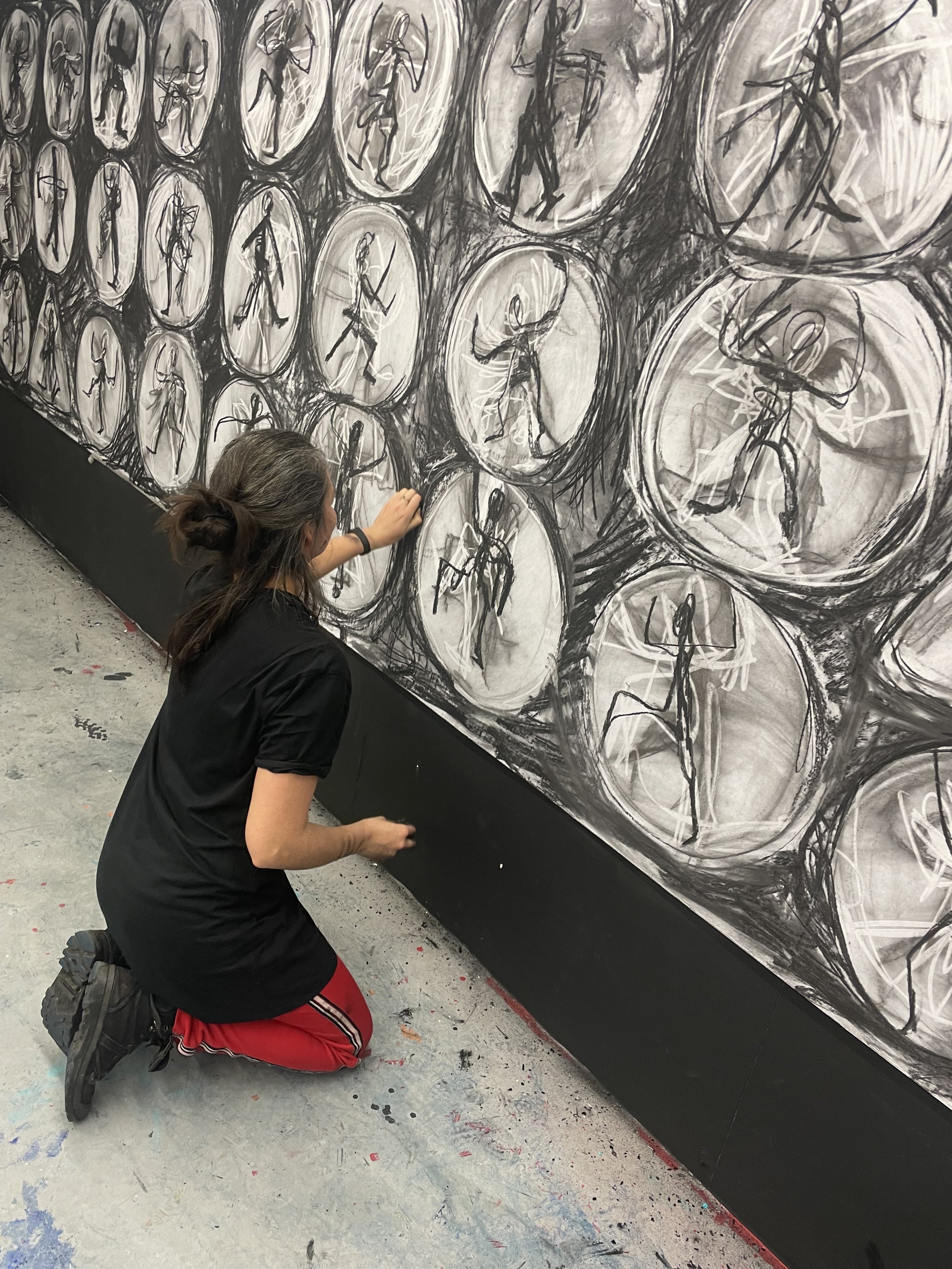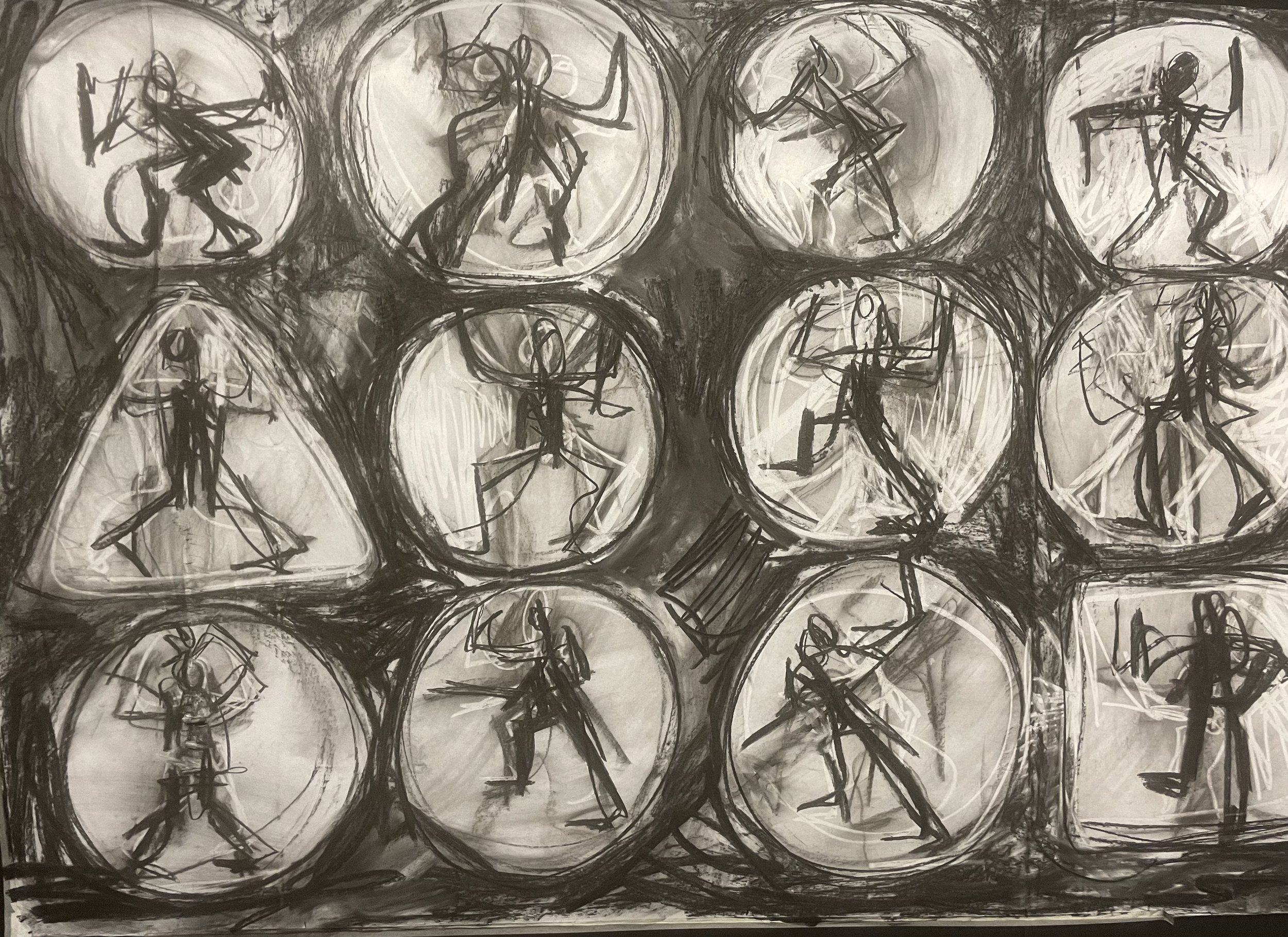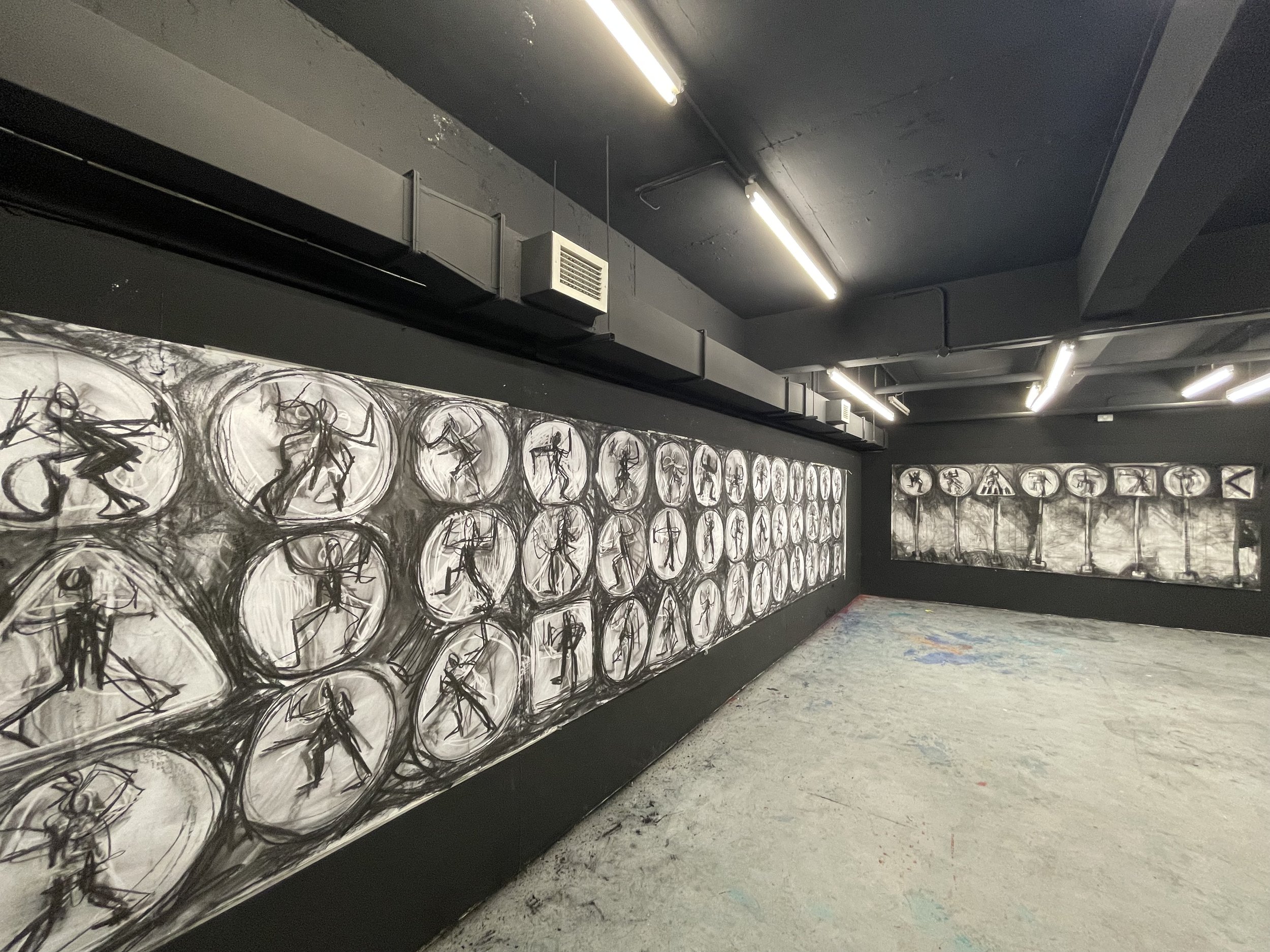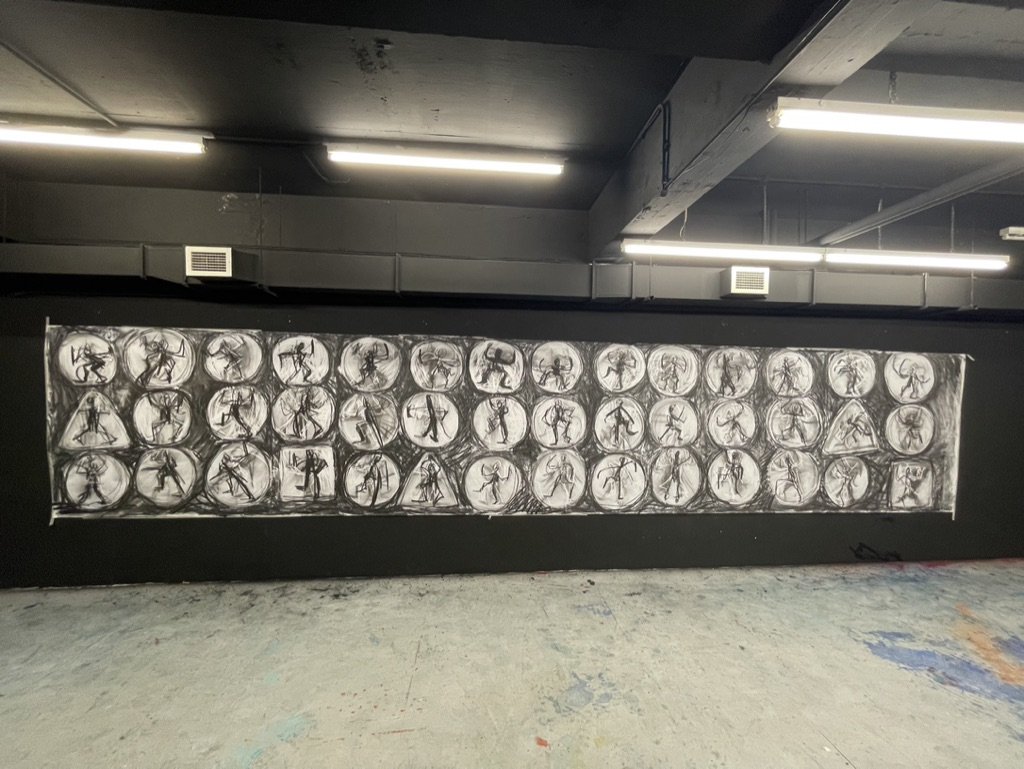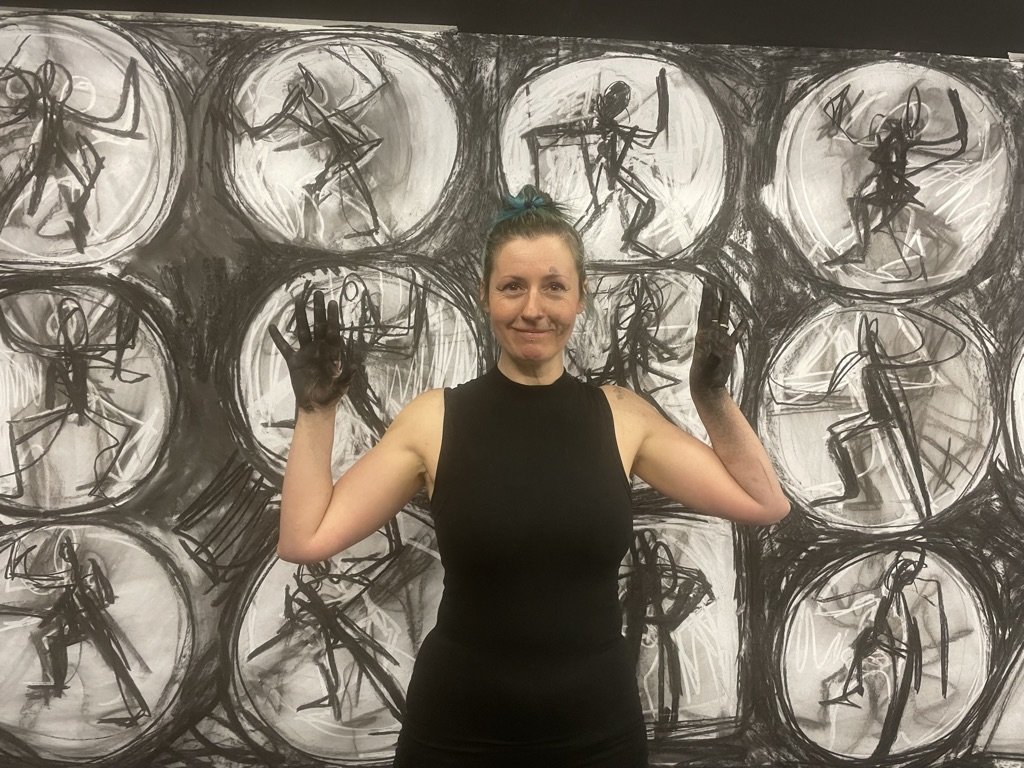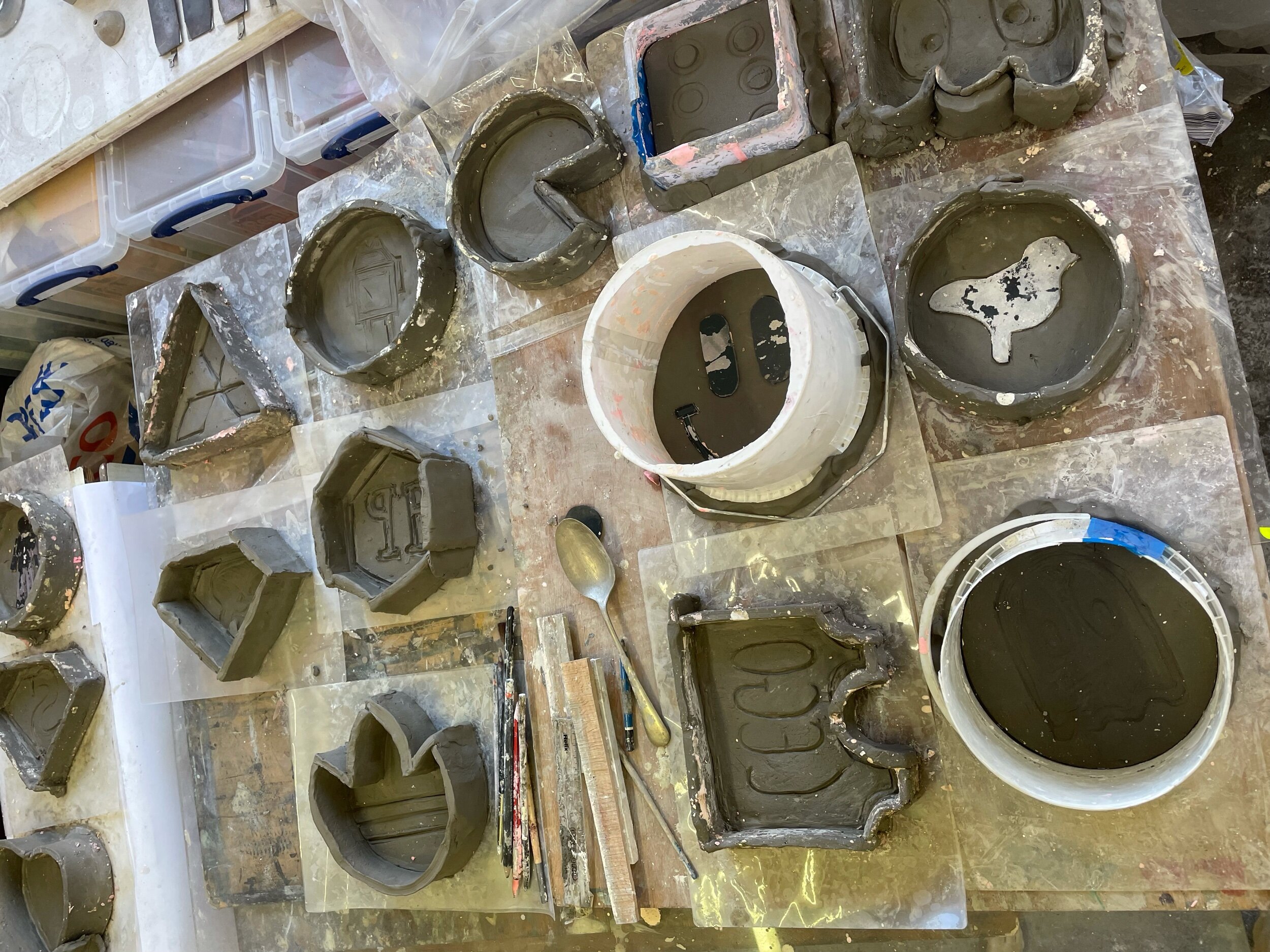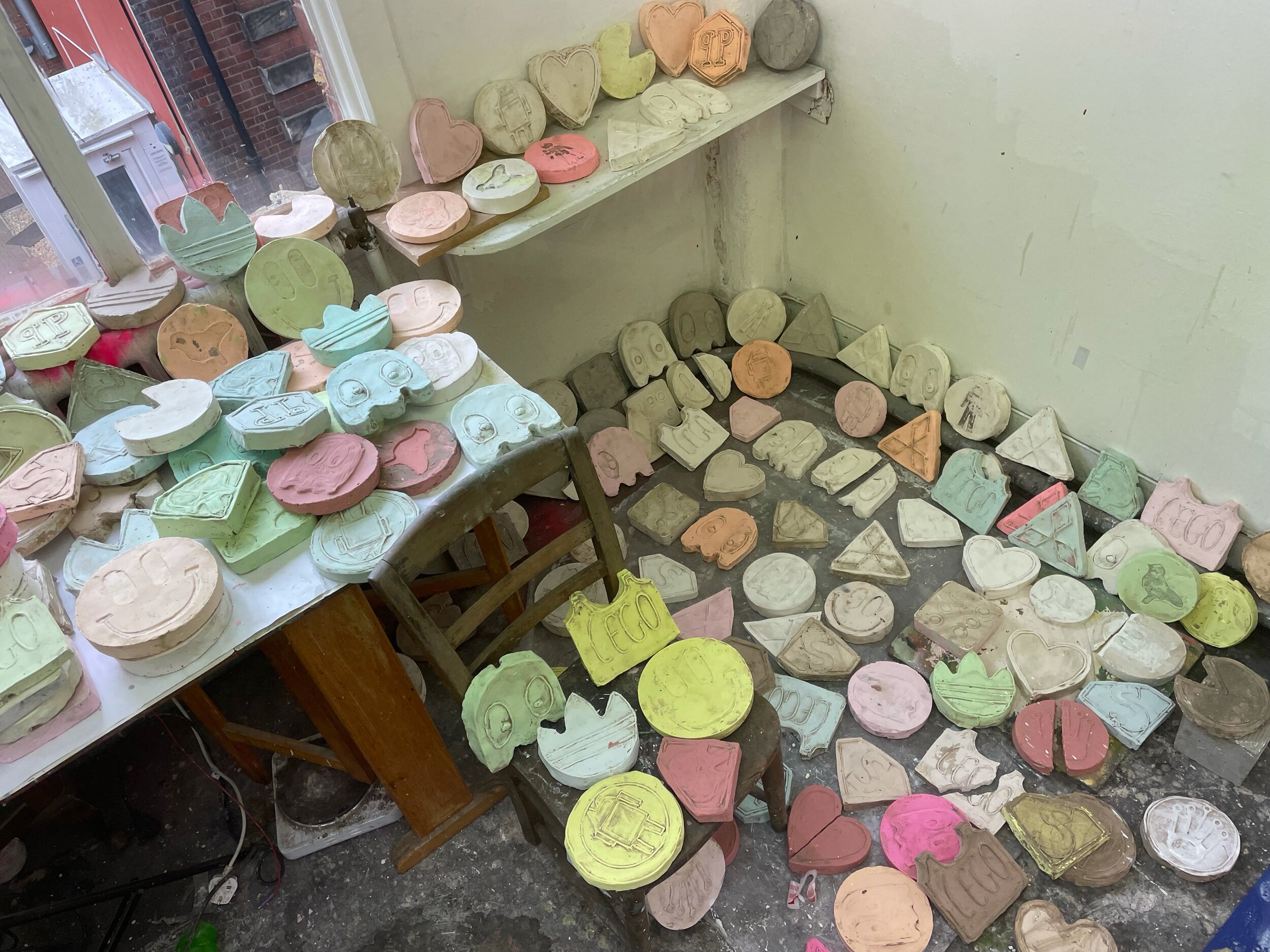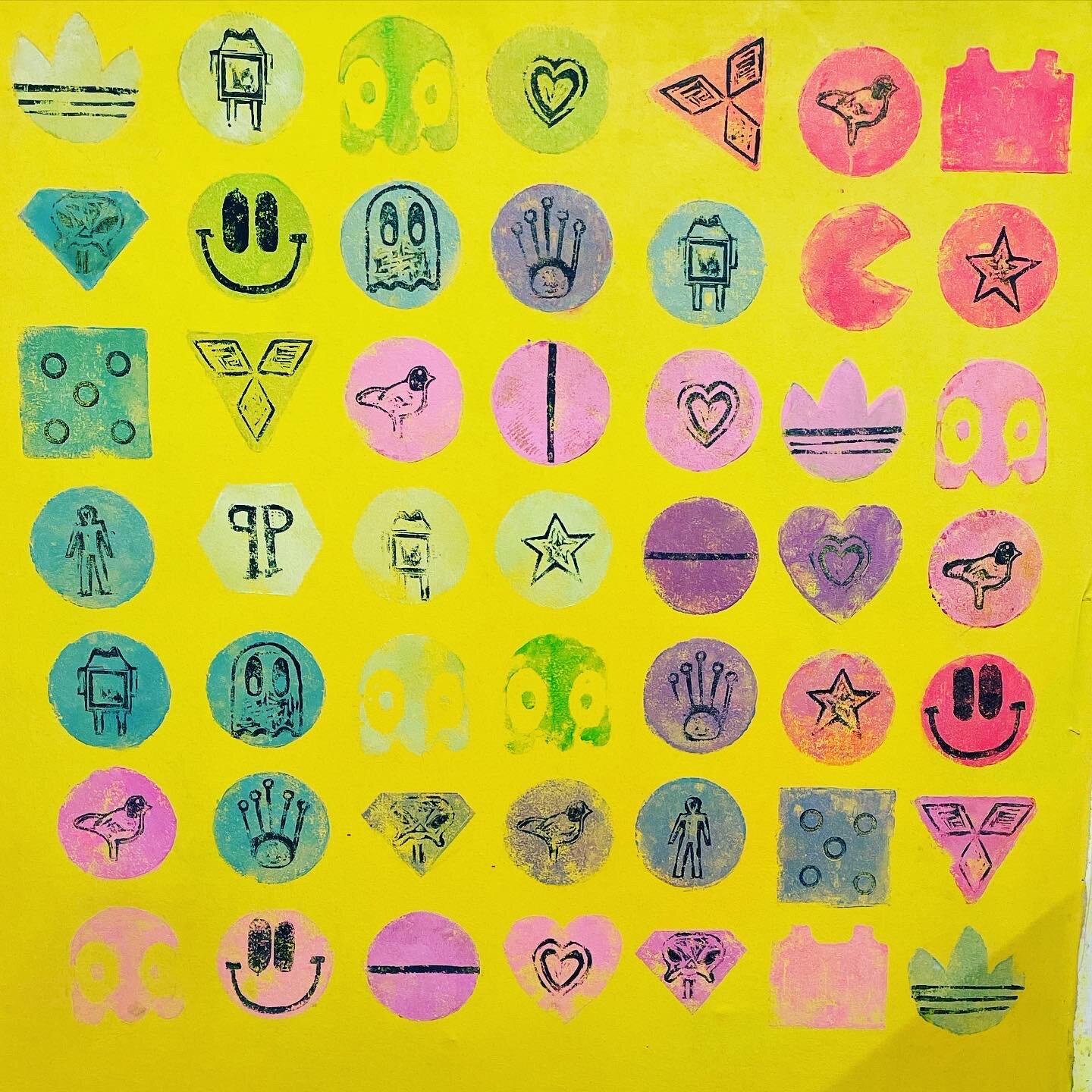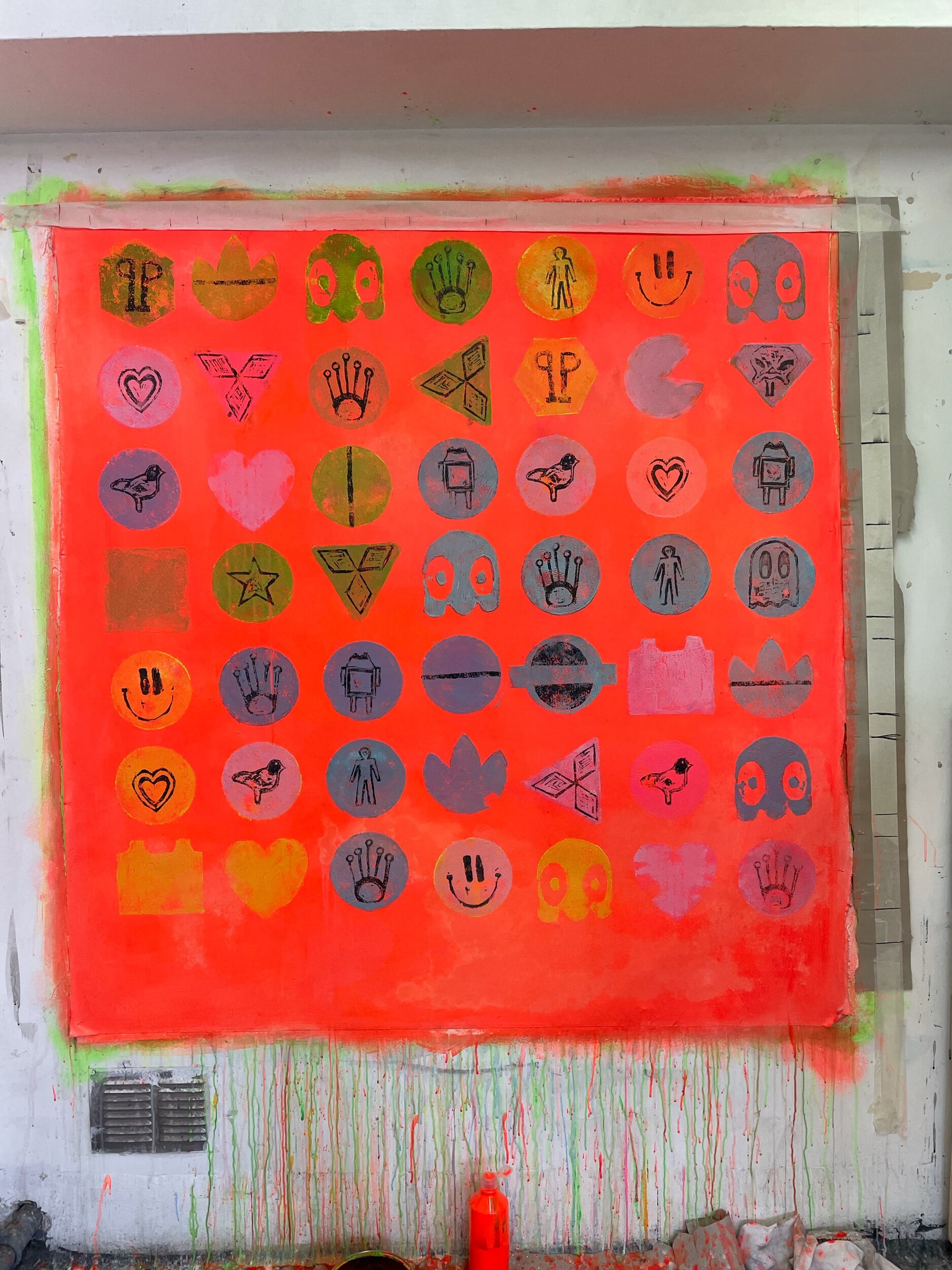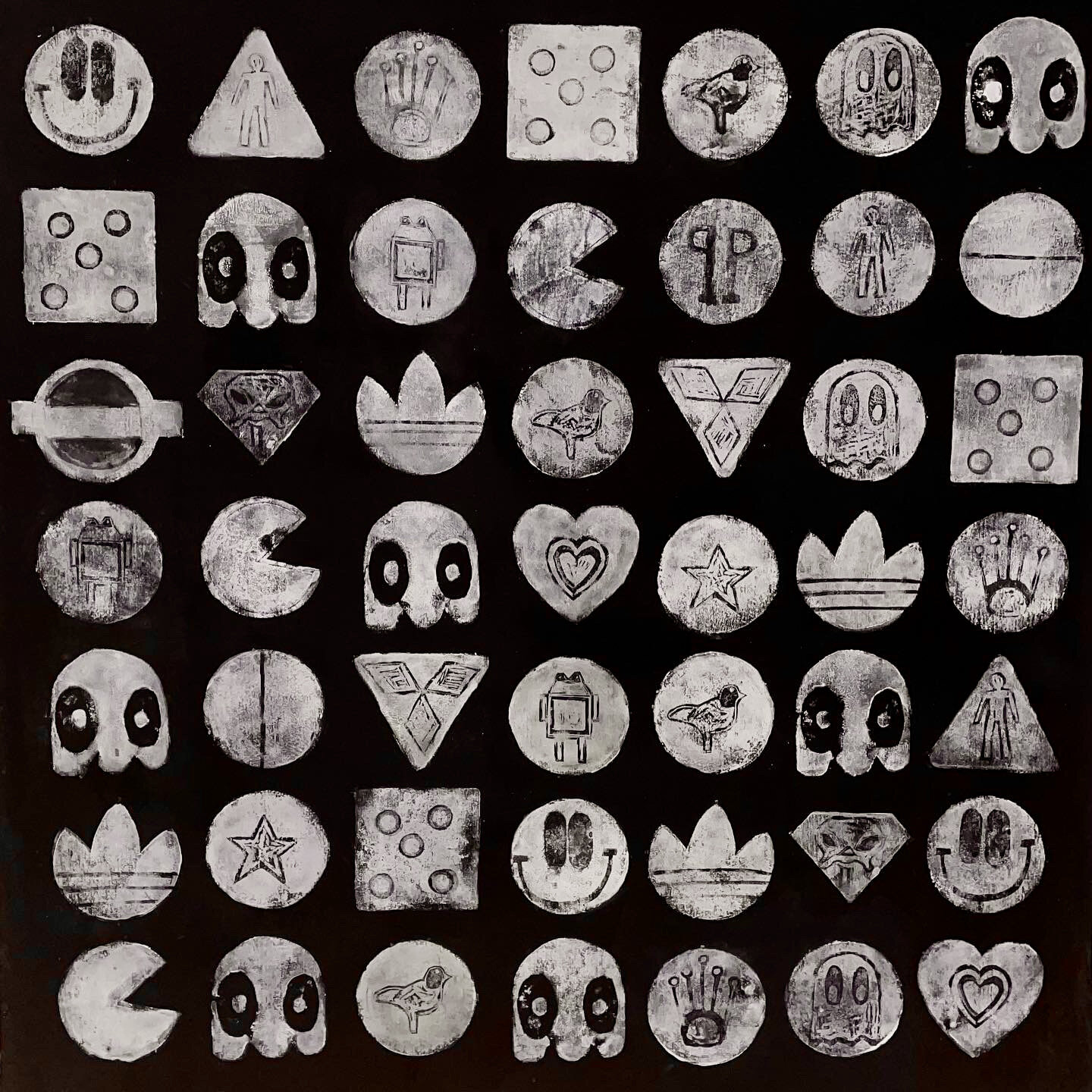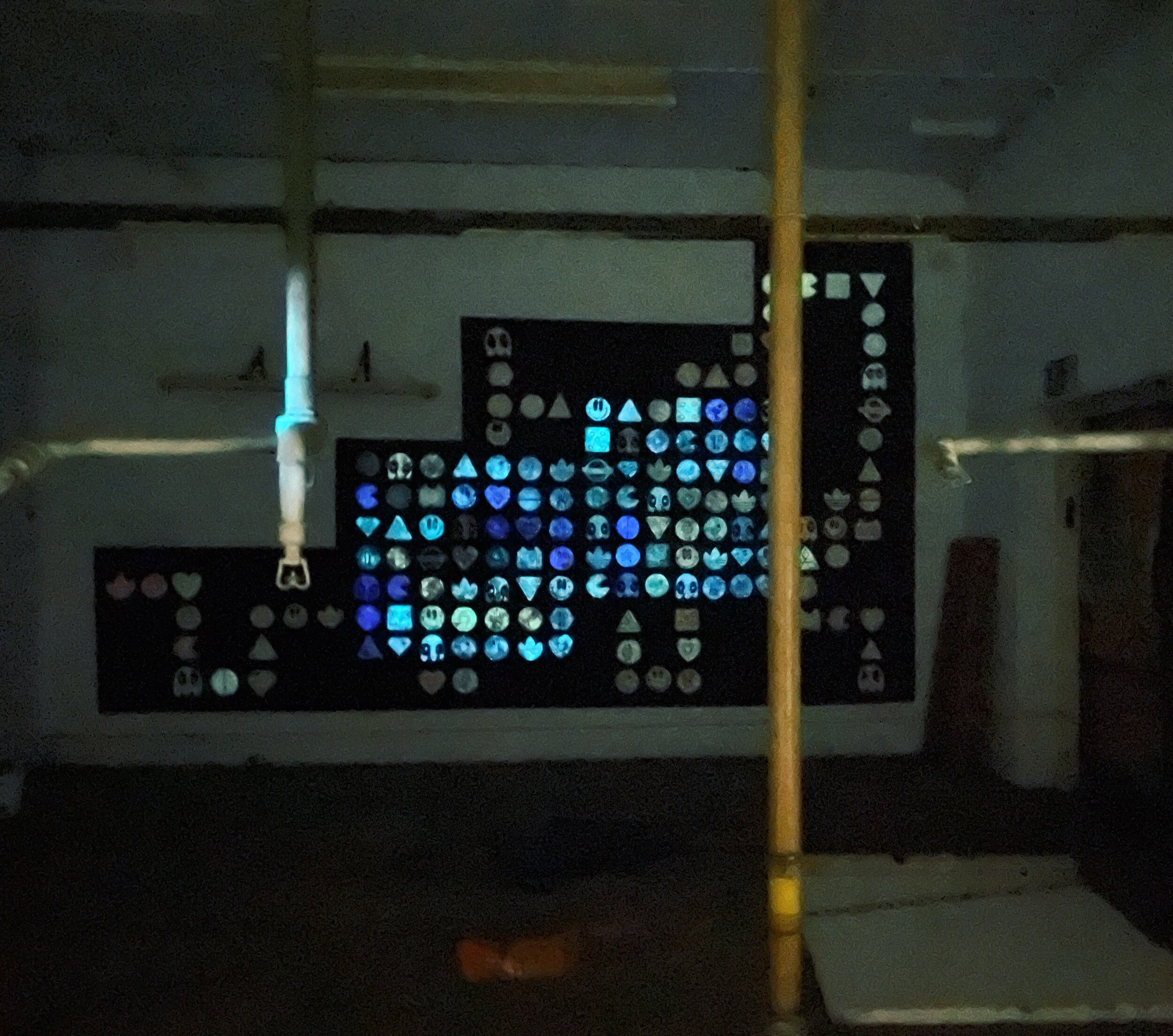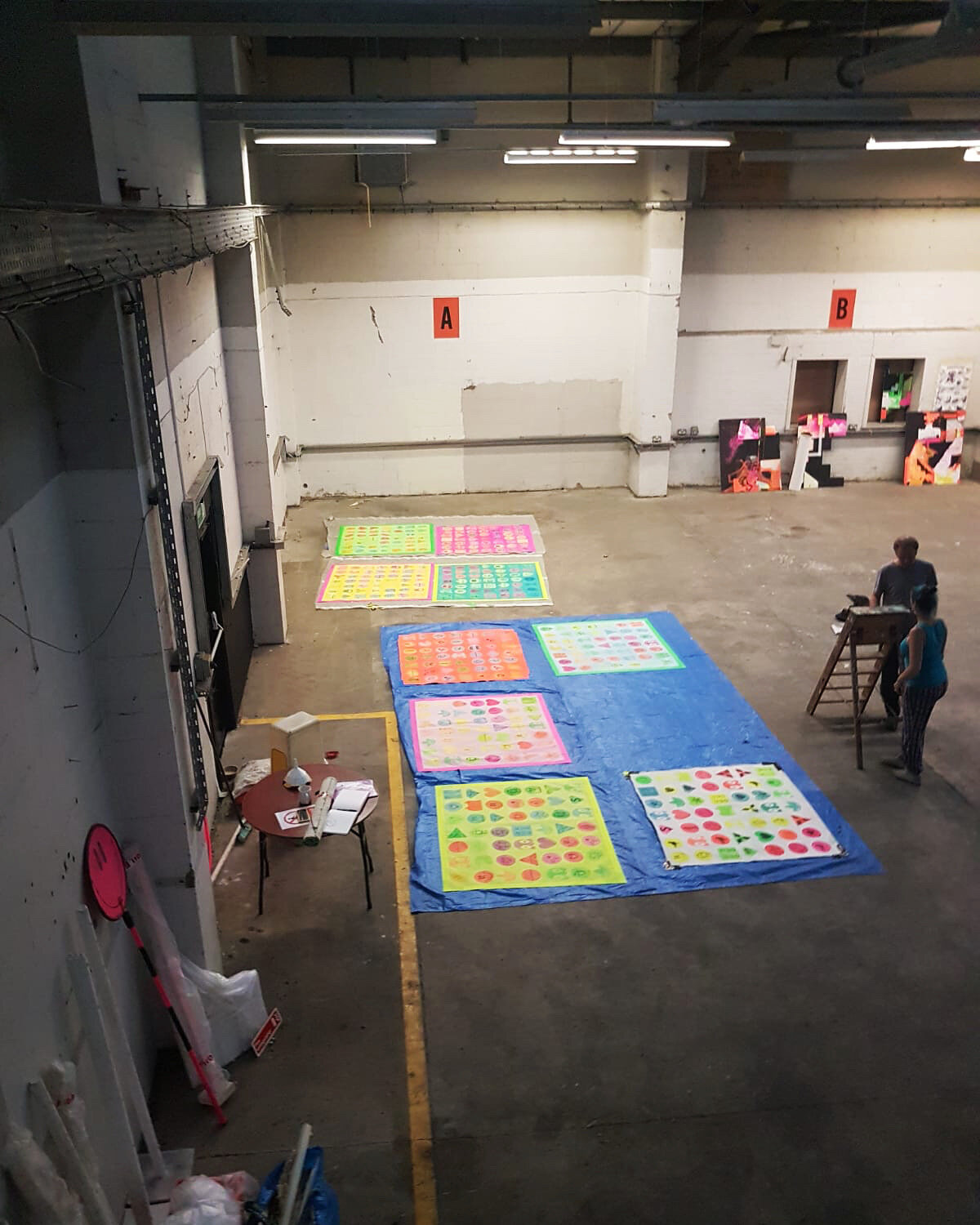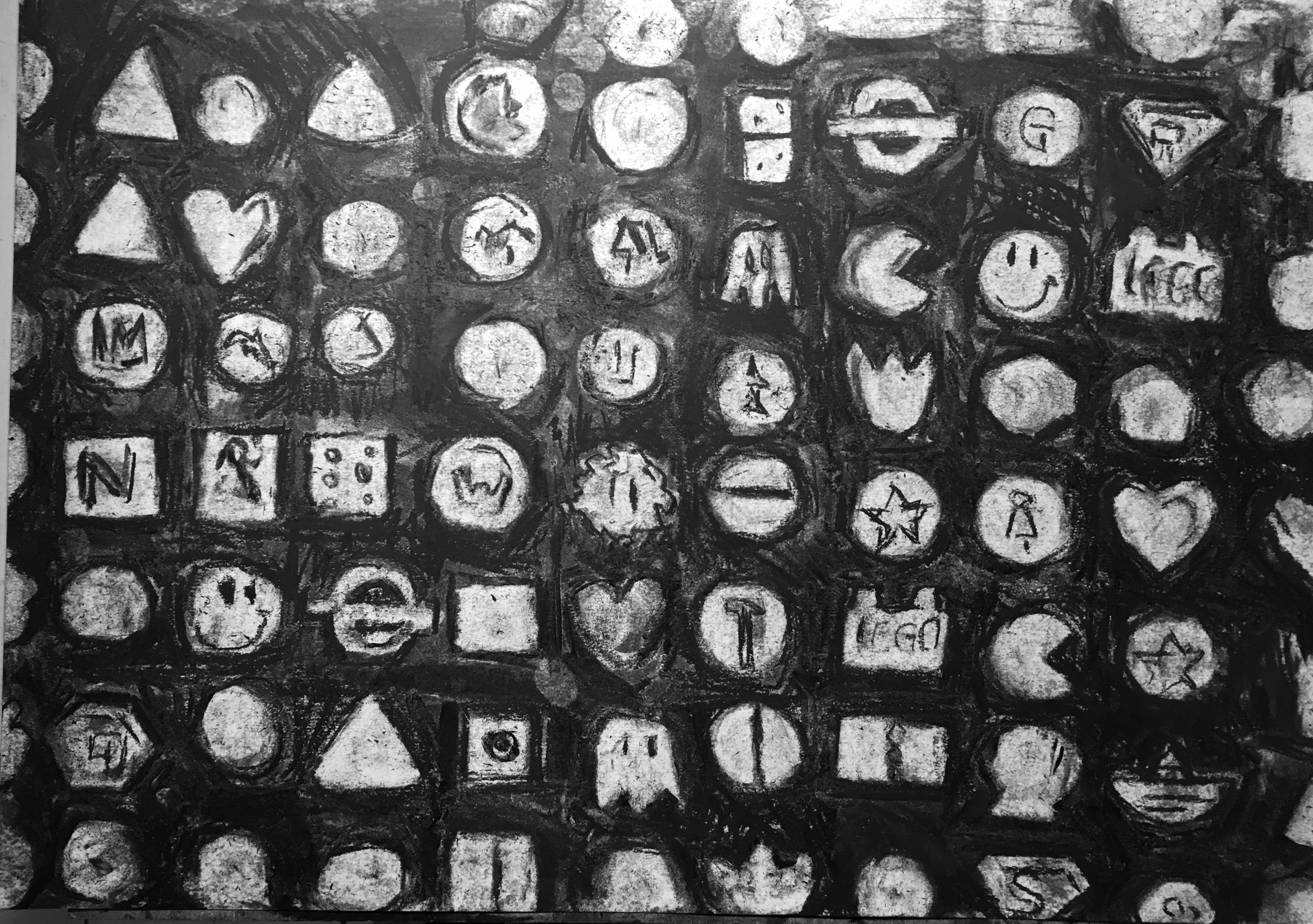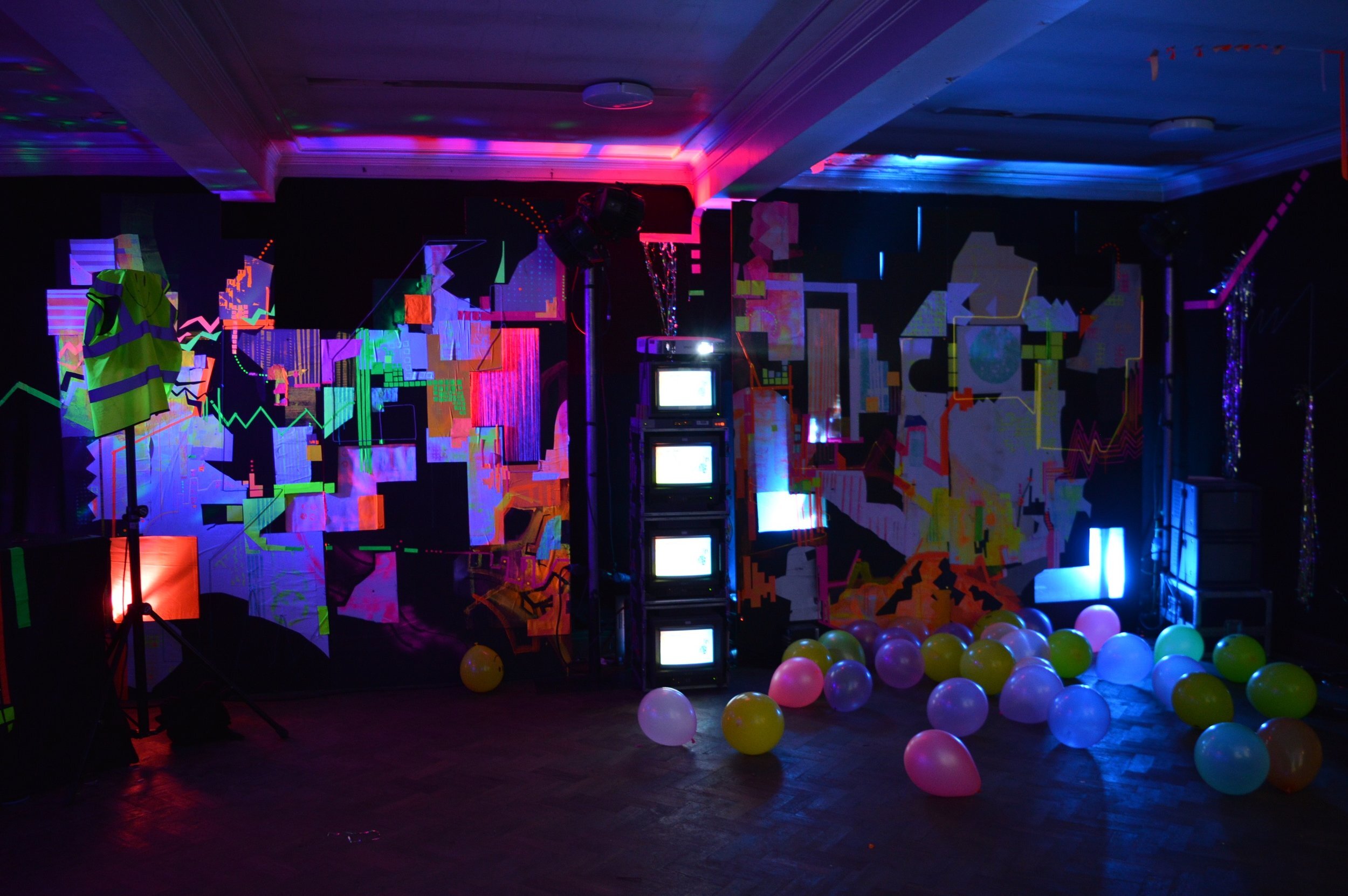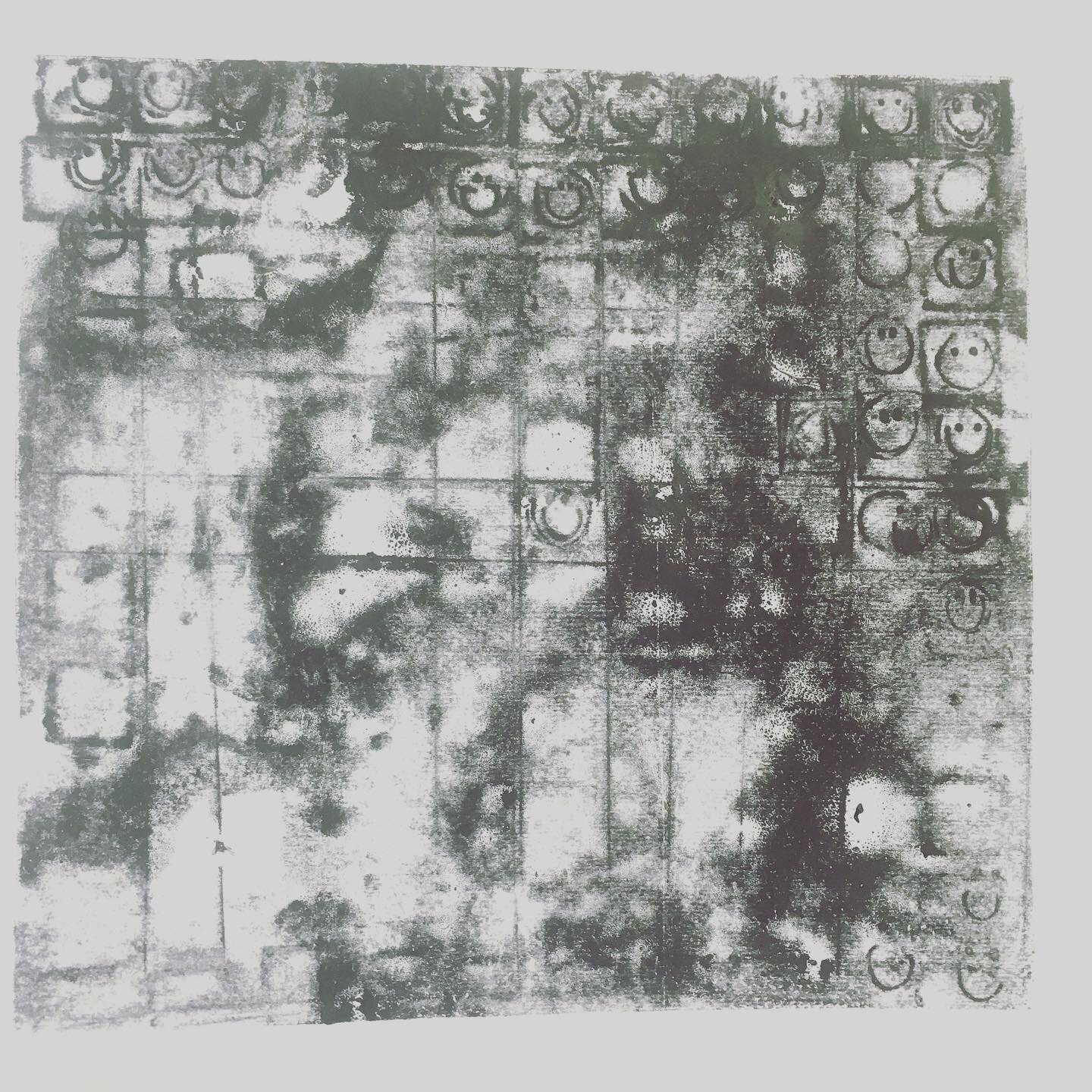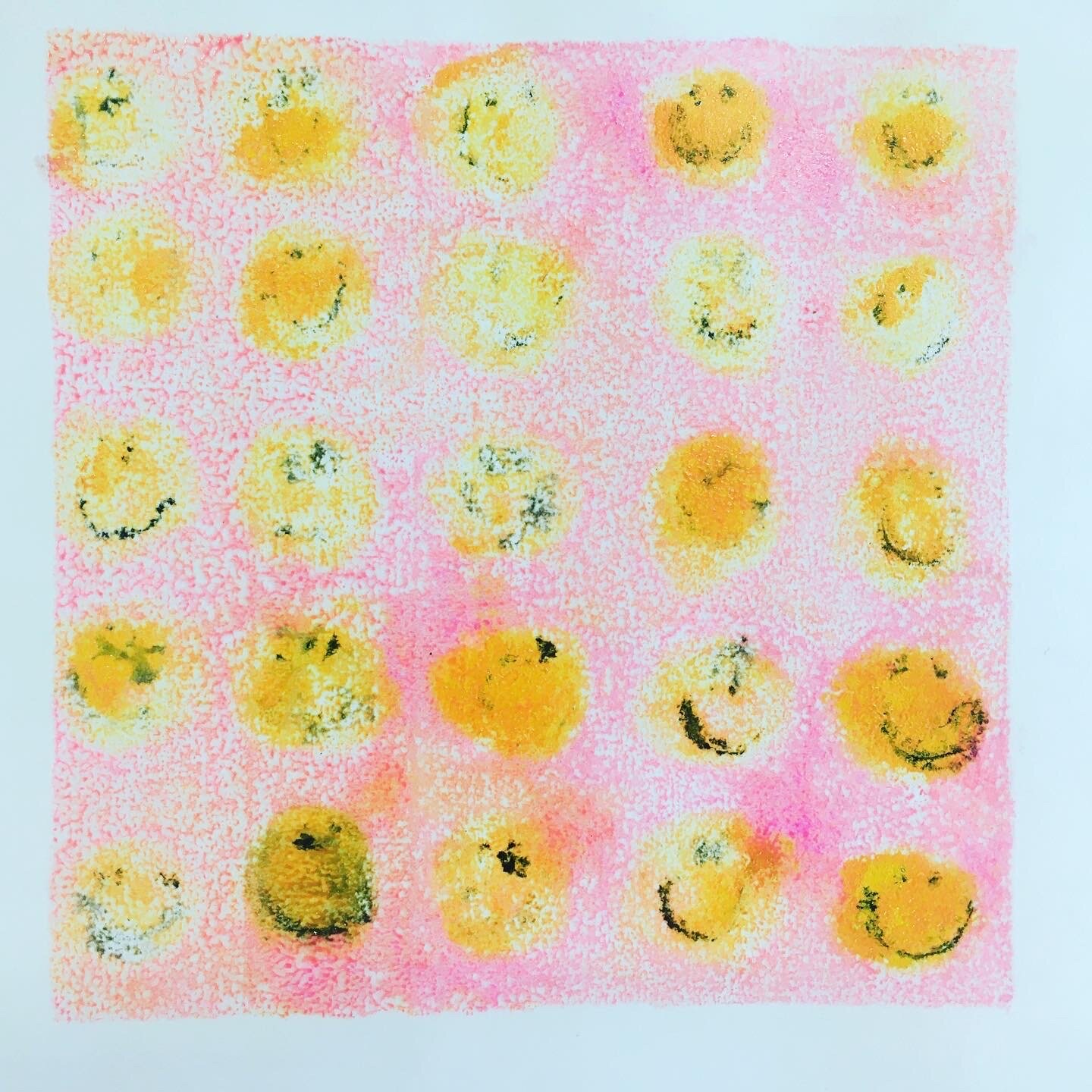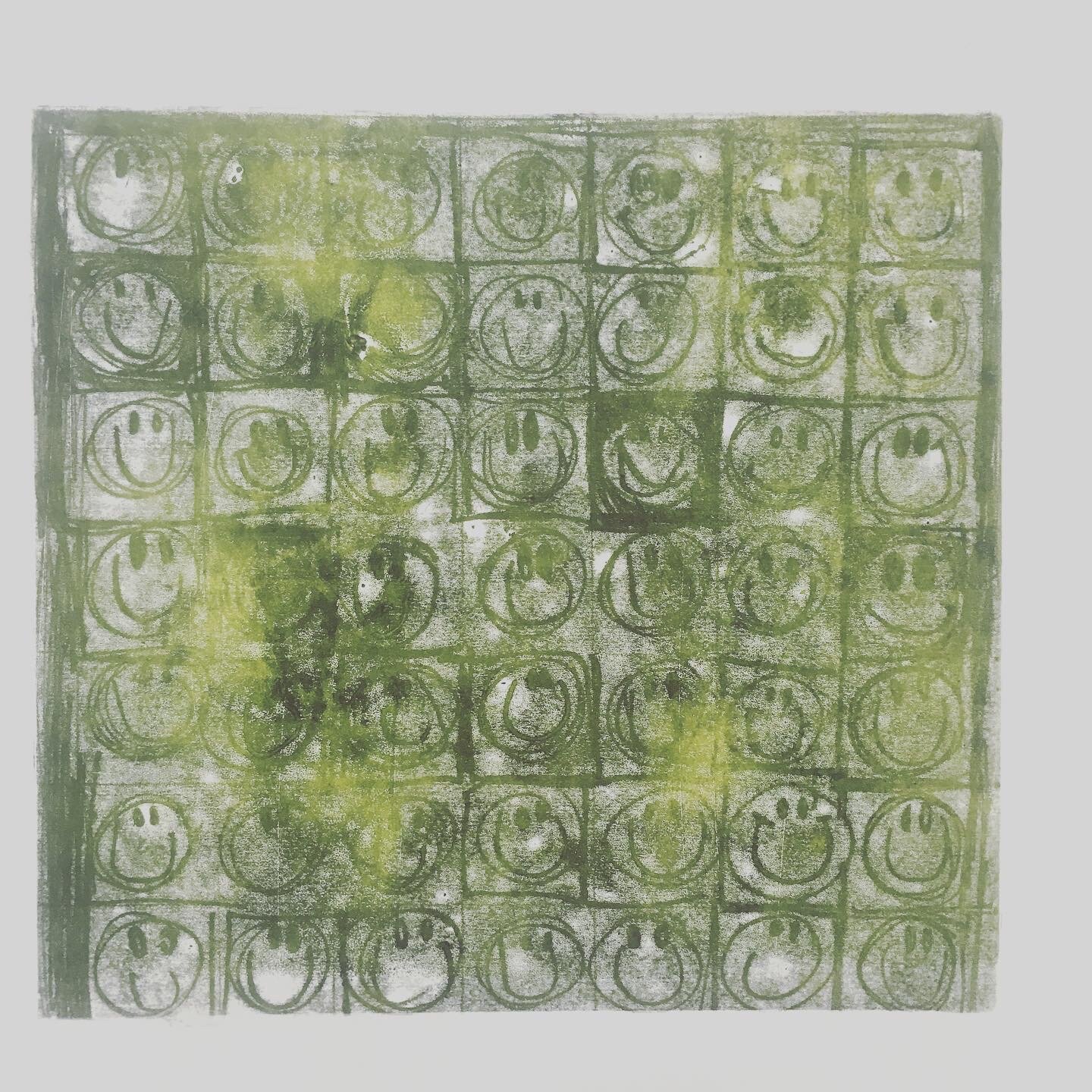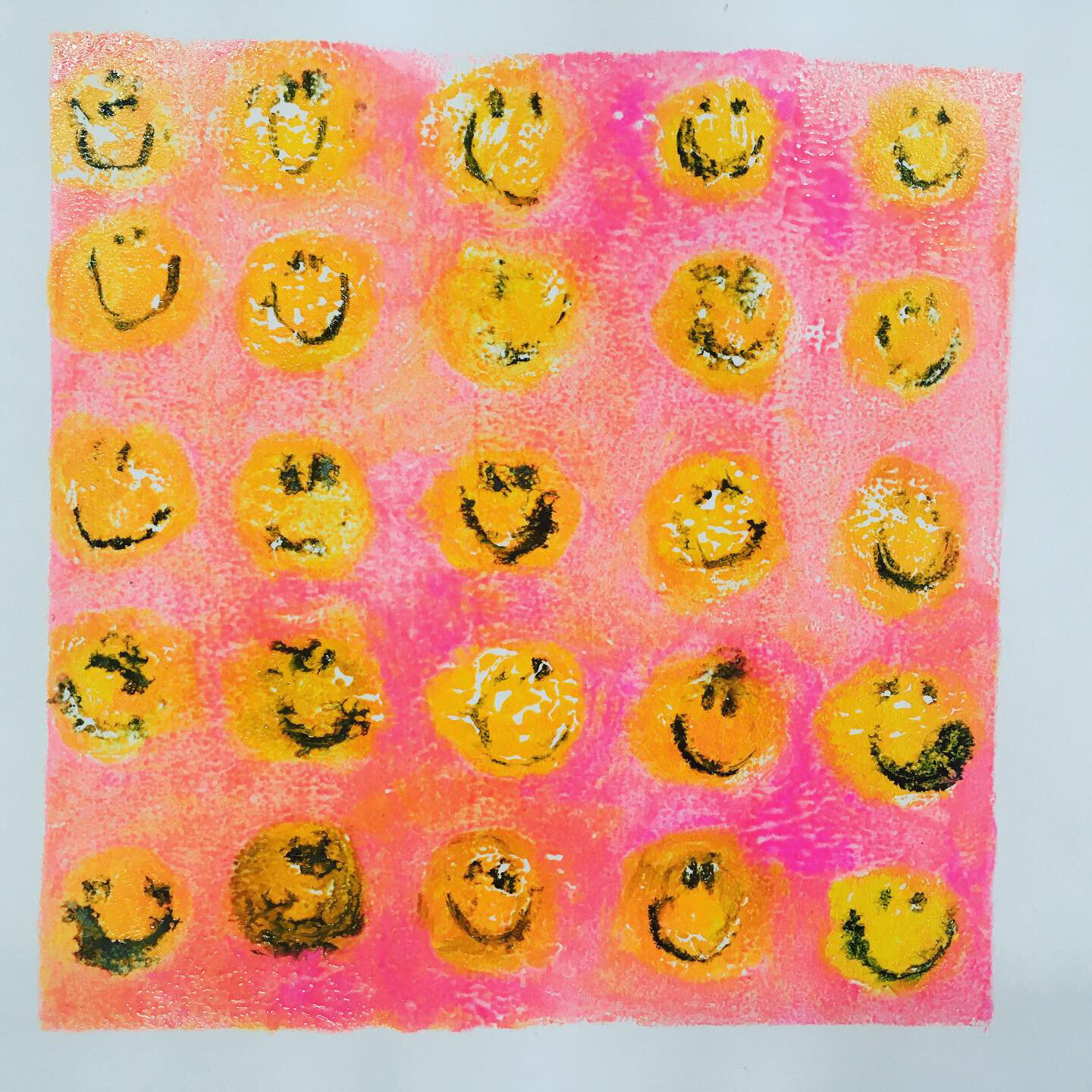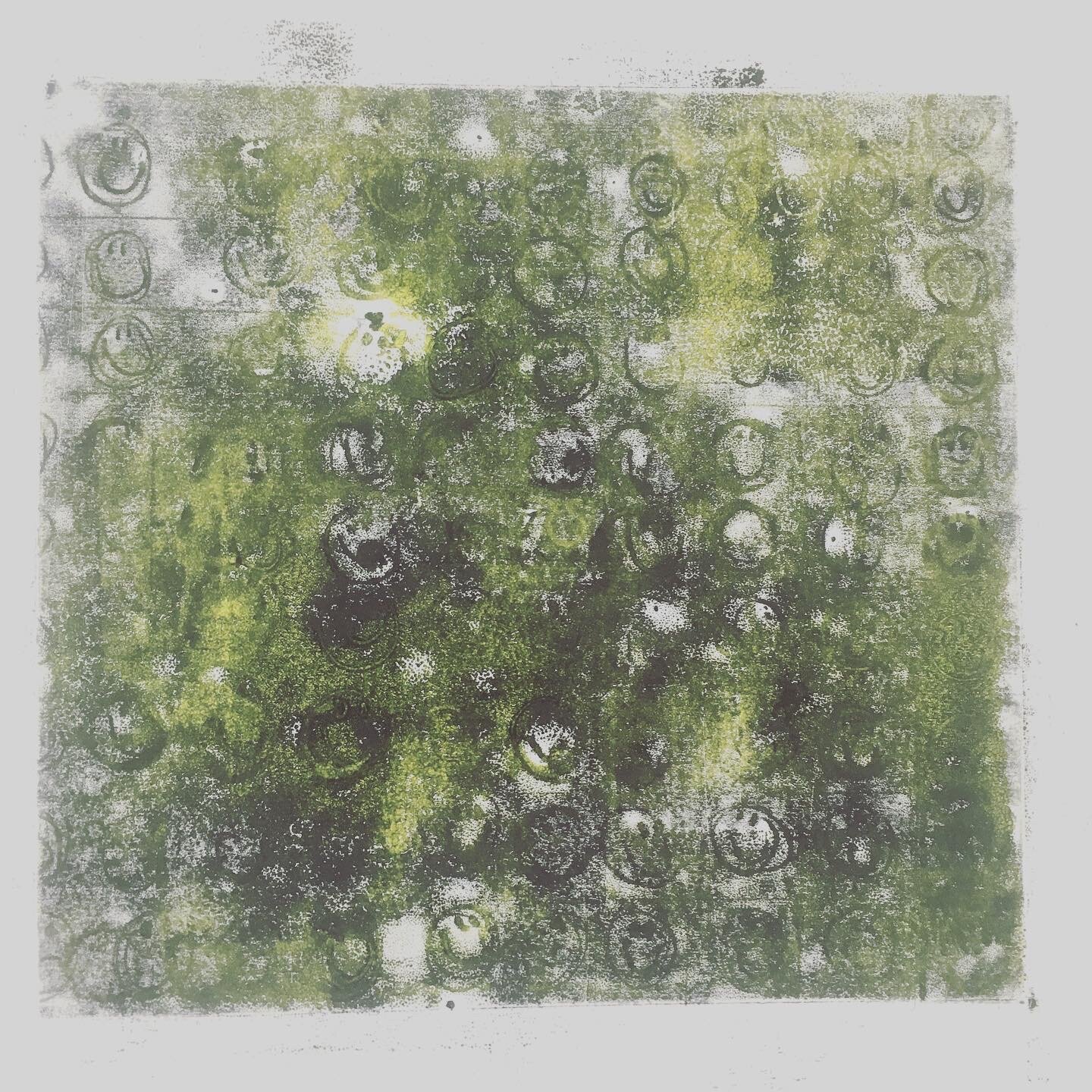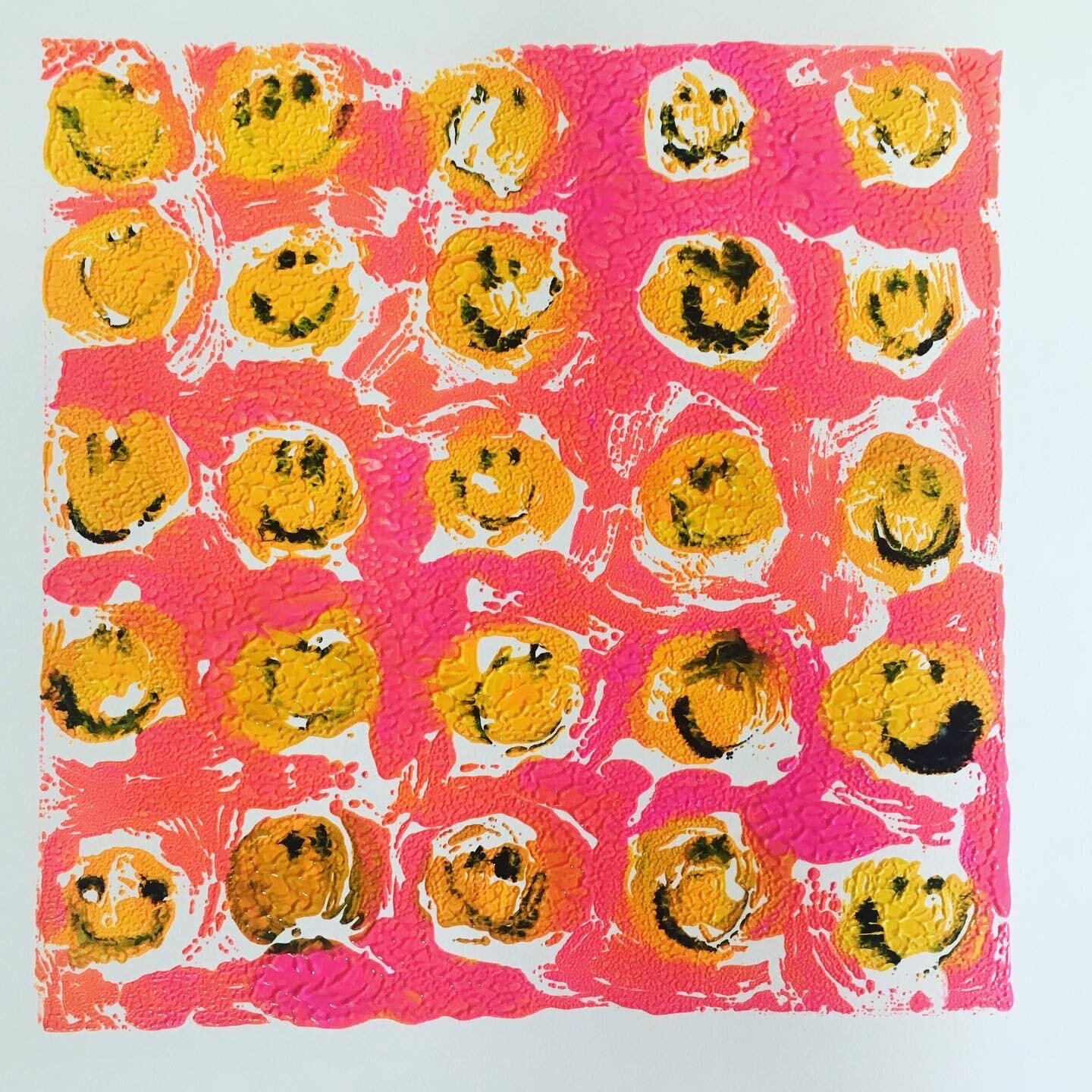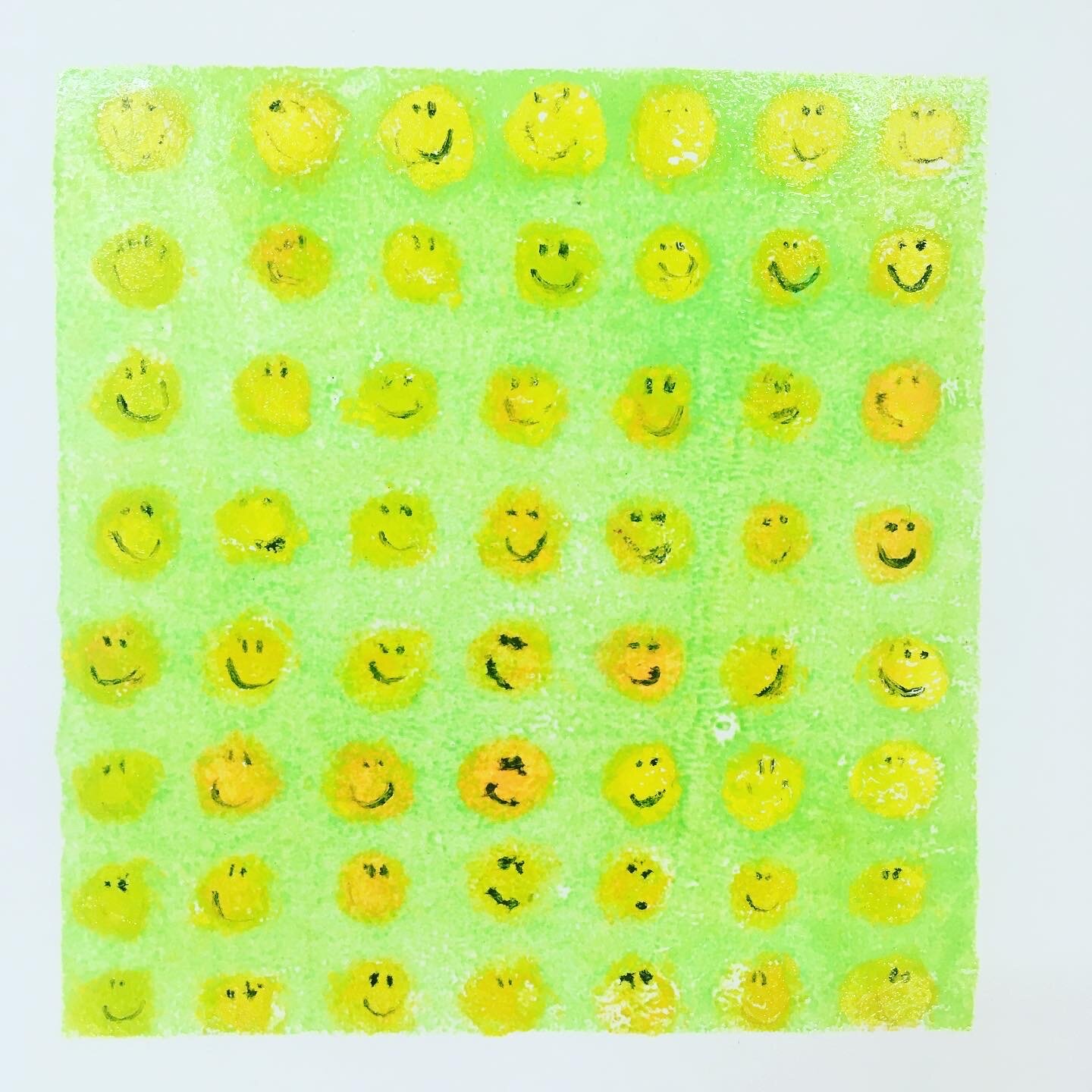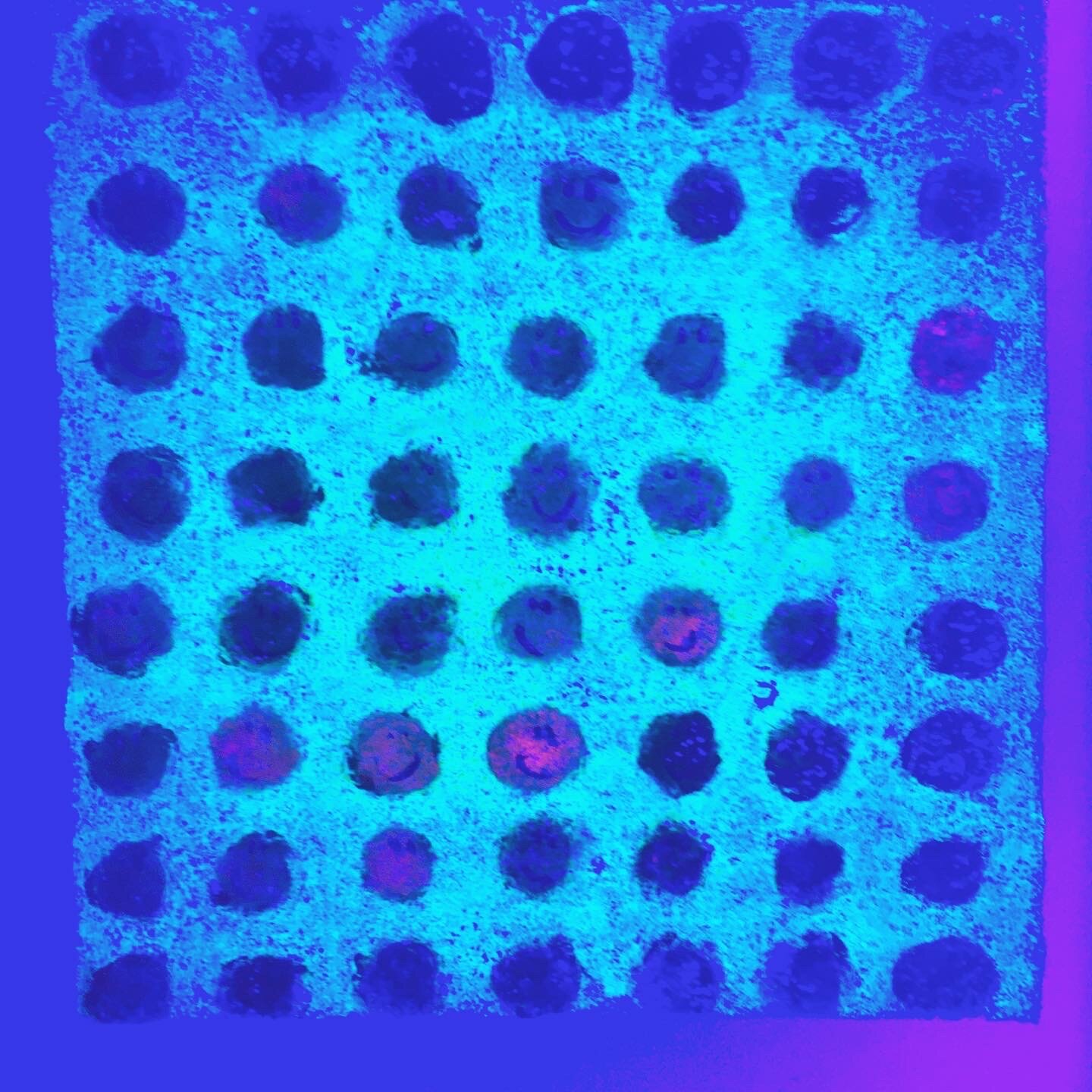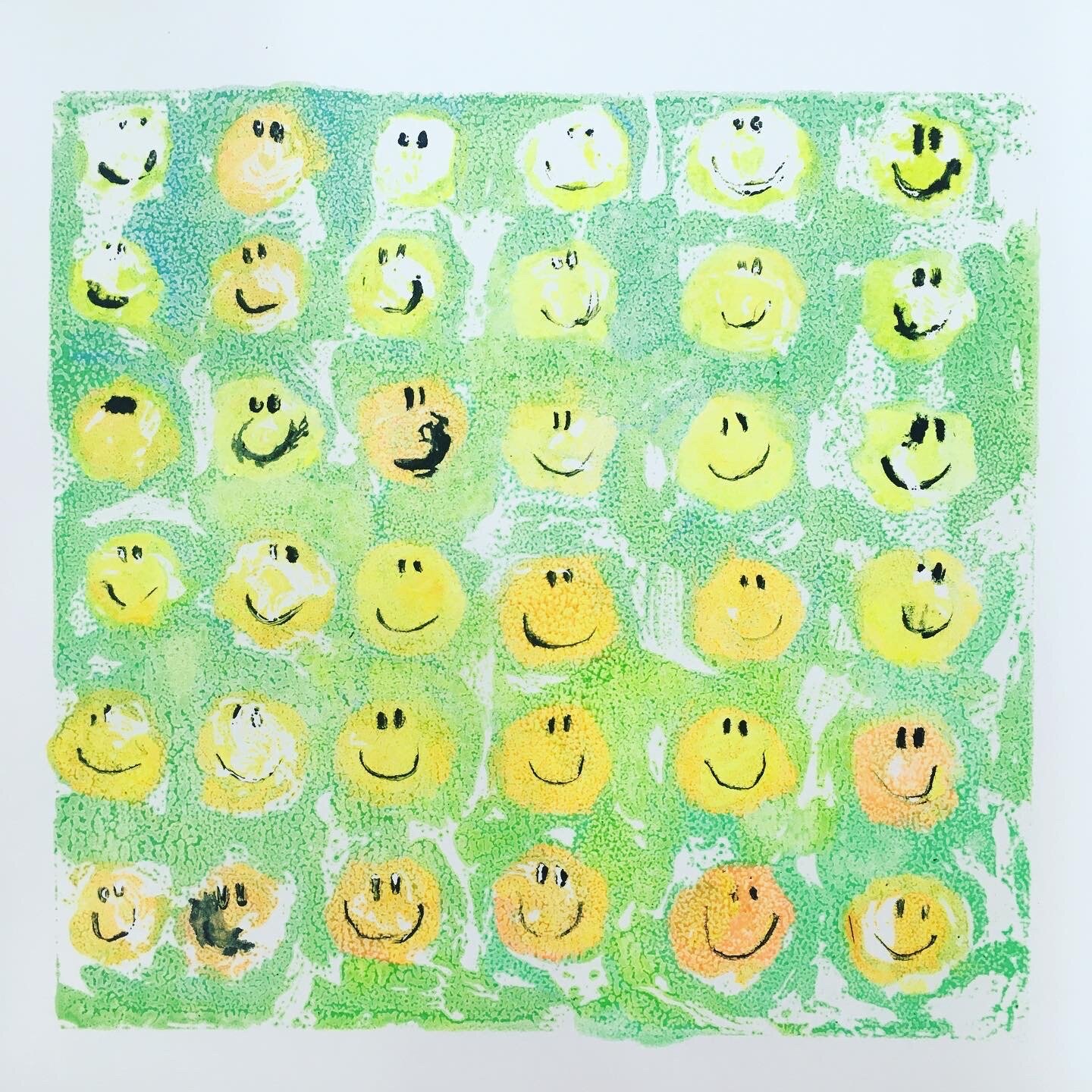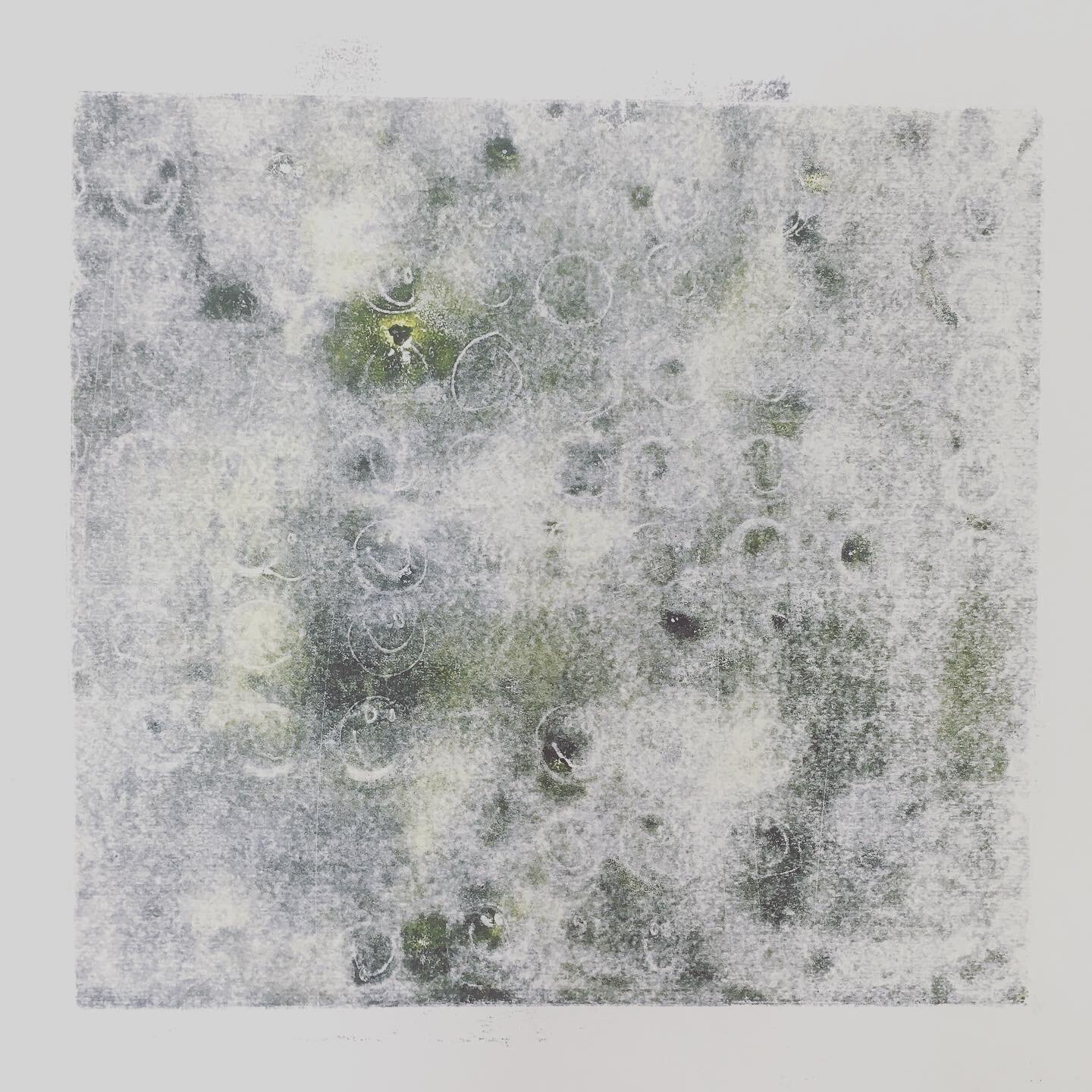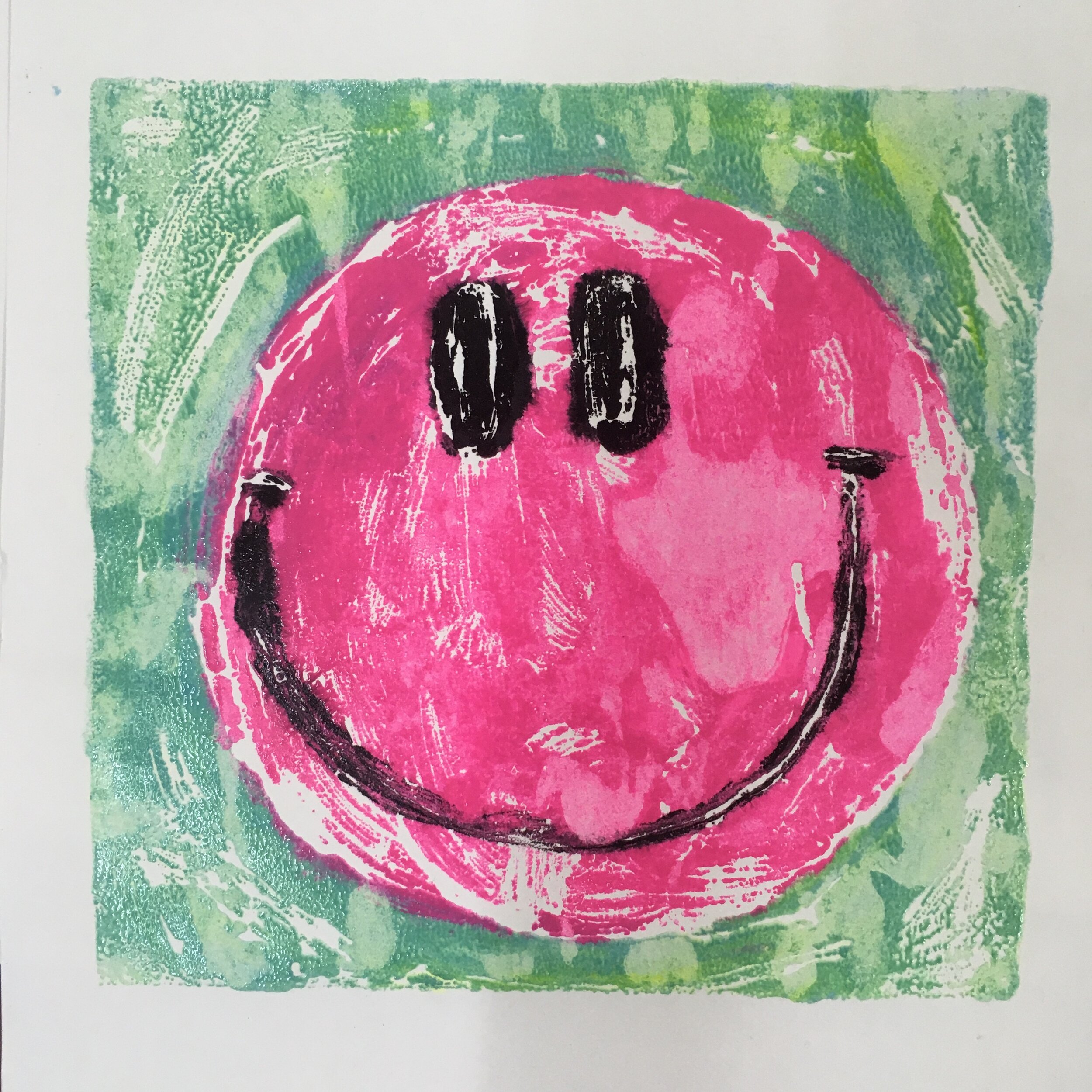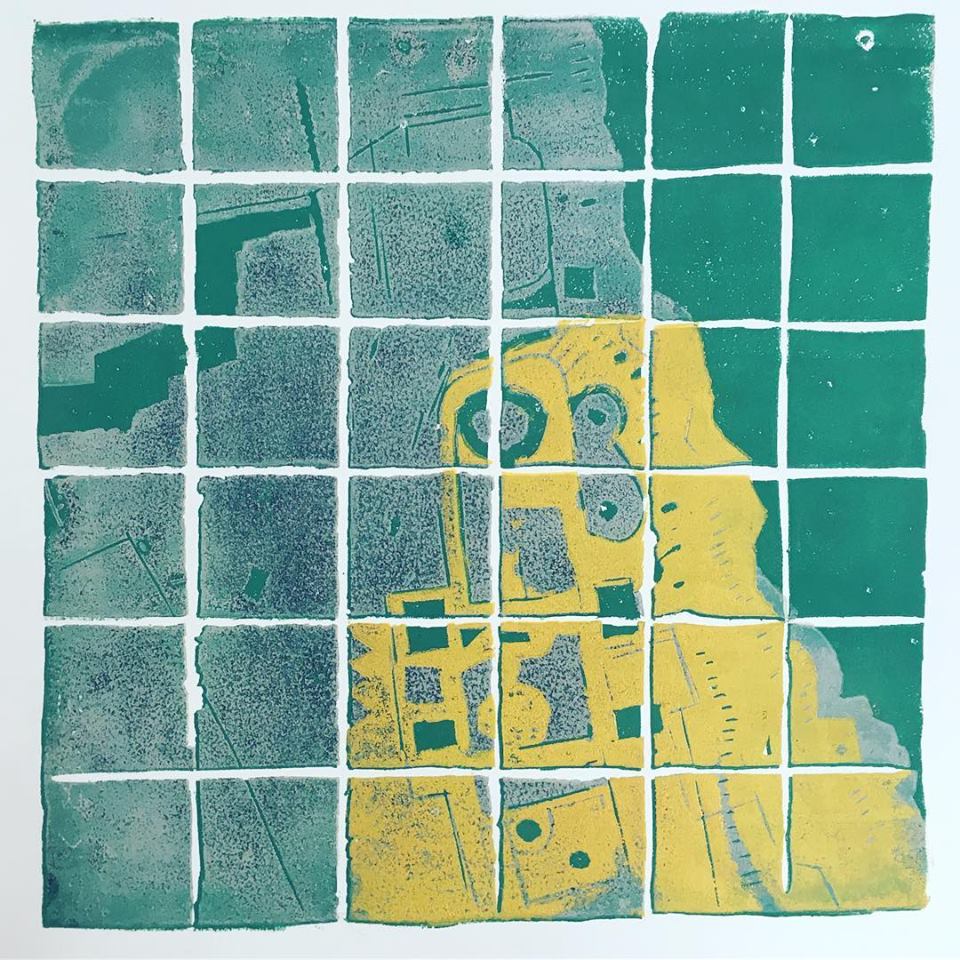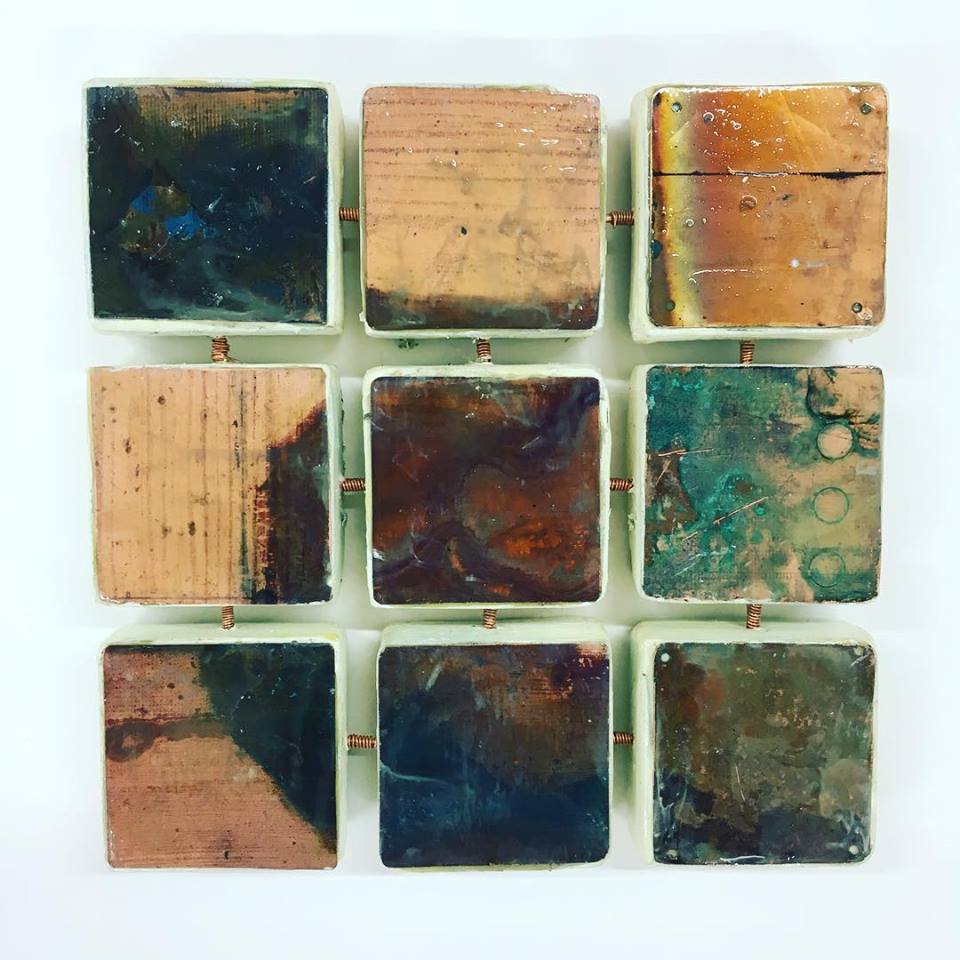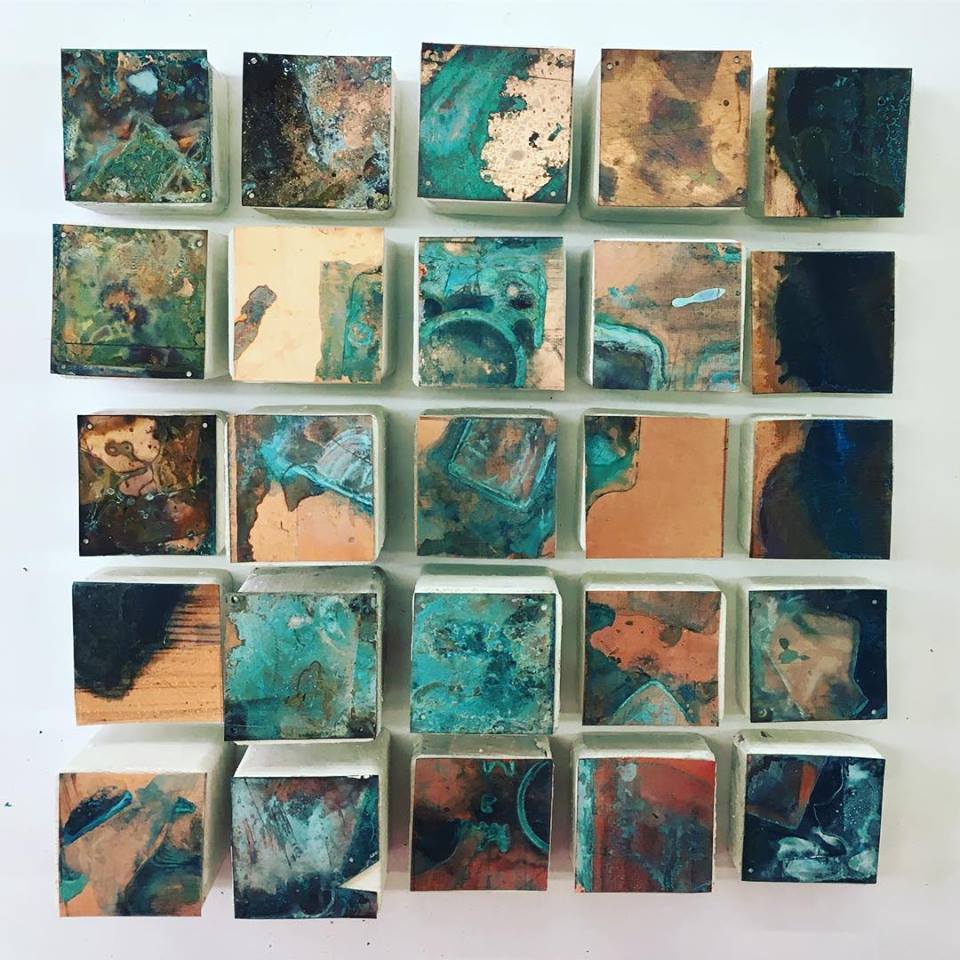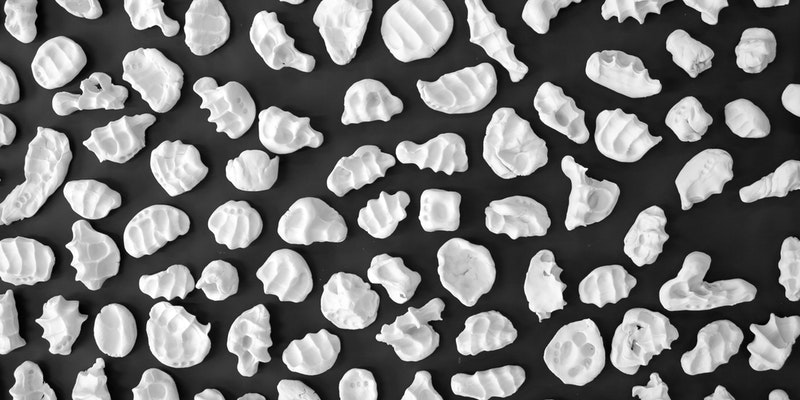Artists and art works
Mark Leckey
‘Fiorucci made me HardCore’ became a kind of ‘visual essay’, which tracked three decades of music and dance lineage from the Northern Soul era through to Rave, as it documented the underground club scene in Britain from the 70s till 90s. [
Useful Quotes
’I remember opening the door onto the dance floor there and seeing this room full of dry ice . A lad with a huge smiley face symbol painted on a cardboard mask loomed out the fog. It was like entering into a well-established ritual and I just plunged in.’
As an artist-archaeologist you are not expected to fit into existing perimeter and it gives more freedom to play – Leckey talking about curating universal dumb things
‘Its all to do with loops, the same thing being repeated over and over again in order to create an altered state’
‘that’s why the stone tape theory is so attractive because it marries a distant past and the future present. It sounds quasi scientific and may turn out to be true. It is appealing to believe that powerful human events get recorded by its uninterested environment and if we just find the right technology we can listen to those recordings , retransmit them.’
Matt Stokes practice investigates communities brought together through commonality, texploring these music subcultures through live collaborative events.
‘ Real Arcadia’ an alternative archaeology; unearthing the memories and ephemera of Cave Raves caves Coniston in the Lake District between 1989-1991. https://www.workplacegallery.co.uk/artists/21-matt-stokes/works/399/
Energy Flash Exhibition
‘Energy Flash’ in 2016 was the first major exhibition, at the Museum of Contemporary Art in Antwerp, Belgium, to consider Rave in the context of its wider influence on art, design, and culture. It took Rave as a case study to highlight the significant and dense history of the 1980s, with its mish-mash of political, economic, social, and technological happenings that went on to set the scene for the rave phenomena of the 1980s and 1990s to explode into existence. Through an archeological lens, ‘Energy Flash’ considered Rave in the context of Autonomy, Technology, Creativity, and Civil Liberty; offering a comprehensive critique of the historical Rave movement and its subsequent influence and intersection within the arts from the 1980s to present-day. Exhibitions such as ‘Energy Flash’ add validation to the study of modern subcultures like Rave as cultures in their own right; that warrant attention within the dominant historical timeline. These movements help contextualise our modern day experiences through the relevance of recent human behaviour and interactions, as opposed to the distant and detached nature in which we approach the study of ancient civilisations conventionally associated with archeology.
Nav Haq, the curator of ‘Energy Flash’, quotes:
Memory, whether folk recollection or official history, is always imaginary. It’s a matter of selections and revisions of contested myths and legends. Raves history is full of them.
Roland synthesises sit silently in stylish display cases while the pills position next to hysterical Sun newspaper articles on ecstasy’s evils are labelled as replicas. Exhibited behind glass these remind us that raves collected epiphanies now seem impossibly distant.
The Reno project excavation
Relevant example of the importance of digging up the recent past.
The site From the 1950s, the site acted as a safe haven for a community which was excluded from wider society and formed the focal point for black / POC in the Manchester area. from 1950s but with it’s demolition in 1986 a void was left in this community. Linda ? Having visited the club in the 1980s approached the councils to reveal the site through archaeological survey and excavation. As a focal point for the community it brought together disparate groups of amateur archaeologists alongside the old skool club regulars for a three week event.
For me the ‘material culture ‘ artefacts of the site are enlightening as to what are those of rave could be. But mostly the projects highlight the relevance of cross over between contemporary archaeology, the arts and community projects to connecting people and help us better understand the present . Why? Does it help us understand the present? The project opened up conversations / discourse between the club regulars about aspects of the clubs past but also allowed memories to resurface and new friendships to be formed.
DIGGING THE RECENT PAST
Our experience of excavating the Reno eloquently demonstrates the three main issues in dealing with the archaeology of the immediate past. First is the scale of 20th-century industrial and urban archaeology, and the consequent problems in recording this. Second, how do we record such sites, while maintaining a uniquely archaeological perspective? Finally, there is the role of 20th-century archaeology as a community experience promoting excitement and support for the investigation of the recent (and not-so recent) past.
Twentieth-century archaeology offers a number of unique challenges because of its scale, complexity, and the need to focus on the archaeological, rather than what might be social or economic, history. While – as mentioned before – some topics, particularly military sites, are already seen as credible and popular among the wider public, others will no doubt follow. The period’s transport and energy revolutions are the next two 20th-century industries that have begun to receive serious study, at least in Britain, for example. Yet we suspect that, while the 20th-century remains in living memory and, more importantly, the range of sources for its study remains enormous, archaeology will struggle to find its unique perspective. The Reno project, however, has revealed one way forward.
Why is this relevant to rave? Is it because it highlights the need of community. Rave and the acid house parties were a direct opposition to the Thatcher effect and Neoliberal individualism. The Rave phenomena presented a new kind of community born out of the ashes of declining industrialisation, these events took place in the the moderns ruins of factories and warehouses which were abundant in the late 1980s/ 90s.
They presented a new kind of community and one that broke boundaries and encouraged inclusivity gay/ straight black / white non of this mattered so much within the the party scene. Black communities had been excluded from mainstream bars and clubs and already had this alternative ‘nightlife’ as seen in the Reno.
As the music evolved the new sound of rave replacing the northern should sounds, its sound-systems and events attracting mixed crowds and encouraging integration as the music brought people together to dance. This emerging sound off of electronic music was unlike anything heard before and it widened the generation gap in music experience more than ever.
Patrick hough
Patrick is an Irish artist and filmmaker exploring the links between cinema, technology and archaeology. He is preoccupation with Egyptian mythologies and archaeology but through the lens of cinematography and re-made artefacts as props.
‘In a thousand years’ is a film created in response to the discovery and excavation of Cecelia de Milne 1930s ‘The Ten Commandments’ Film Set which was discovered in the Californian sands. The set itself one of the largest in film history and ‘De Milne’ buried it post filming because it was more effort to deconstruct and he didn’t want anyone else to use it. It raises questions about object histories when the archaeological object is in fact a replica ‘prop’ created for cinematic purposes. The film is part poetic narrative spoken by the excavated ’sphinx’ as she muses on her existence poses questions to what, who and why she is.
‘If in a thousand years’ creates discussion surrounding object histories, working with replica artefacts from a cinematic context. The embodiment of past culture within a fake artefact which in itself depicts something of the archaeology of cinema in the time in which it was created. What is significant is that this set and its artefacts are ‘fake’ but still embodies perception of ancient Egypt as depicted by cinematography in the 1930s.
These props are indeed archaeological artefacts, having lay buried in the sands they become an archaeology of cinema. Opposing, contradicting our perception of what archaeology can be. His work questions what we can learn about the present from ‘digging up the recent past and in this case a subjective view of the ancient past.
‘Object interviews’ opens up discourse on the relationship of cinema to history and history to fictioning. Specialist discuss the fake Egyptian cinema prop artefacts. Each interveiwee coming from a specialised background; a curator of Egyptian artefacts, a social critical theorist and a prop maker.
When an object – a film prop – is removed from its original context and specialists of differing field are invited to analyse and offer interpretation upon it – it highlights that the use of an object is subjective and dependent upon the individuals point of view and experience. It highlights that in archaeological interpretation of ruins and artefacts, the time in which the viewer exists can not be separated and they bring their own preconceptions based upon the time in which they live. This is why archaeological interoperation of site is constantly evolving both based on new discovery but also upon changing ideology within society.
The ideas explored resonate ancient history to now – the flow of time, there is no end point and start point just a constant flux as well as considering the display of artefacts and the changing context of how we view these in a museam.
‘For if our visual history forms part of our visual culture, which itself mirrors our shifting socio-political context, then these objects can reveal much about the politics of representation within our systems of signification.’ – quote about Patrick Hough
https://www.rca.ac.uk/students/patrick-hough/
https://youngartistsinconversation.co.uk/Patrick-Hough
Collective Memory
The show suggested that the contemporary art museum becomes properly contemporary when it harnesses the ability to present what sociologist Maurice Halbwachs called ‘collective memory’. In his 1952 book on the subject Halbwachs wrote: ‘Our recollections, each taken in itself, belong to everybody; but the coherence or arrangement of our recollections belong only to ourselves – we alone are capable of knowing and calling them to mind.’ The artist as historian in this sense, then, is the keeper or, perhaps more accurately, the instigator of collective memory: its writings, materials, images. The artist gives the audience the tools with which to dig. – Frieze review of way of the shovel.
Hito Steyerl – The Spam of the Earth: Withdrawal from Representation
https://www.e-flux.com/journal/32/68260/the-spam-of-the-earth-withdrawal-from-representation/
Issue #32
February 2012
Dense clusters of radio waves leave our planet every second. Our letters and snapshots, intimate and official communications, TV broadcasts and text messages drift away from earth in rings, a tectonic architecture of the desires and fears of our times.1 In a few hundred thousand years, extraterrestrial forms of intelligence may incredulously sift through our wireless communications. But imagine the perplexity of those creatures when they actually look at the material. Because a huge percentage of the pictures inadvertently sent off into deep space is actually spam. Any archaeologist, forensic, or historian—in this world or another—will look at it as our legacy and our likeness, a true portrait of our times and ourselves. Imagine a human reconstruction somehow made from this digital rubble. Chances are, it would look like image spam.
Image spam is one of the many dark matters of the digital world; spam tries to avoid detection by filters by presenting its message as an image file. An inordinate amount of these images floats around the globe, desperately vying for human attention.2They advertise pharmaceuticals, replica items, body enhancements, penny stocks, and degrees. According to the pictures dispersed via image spam, humanity consists of scantily dressed degree-holders with jolly smiles enhanced by orthodontic braces.
Reading List
Arévalo, A., 2020. Tropical Fantasia: Towards a New Archivo Museological Imaginary. [online] Stedelijk Studies Journal 10. Available at: <https://stedelijkstudies.com/journal/tropical-fantasia-towardsa-new-archivo-museological-imaginary/>
Bennett, J., 2010. Vibrant matter. Durham, N.C.: Duke University Press.
Cahill, Z., 2014. The Way of The Shovel. [online] Frieze.com. Available at: <https://www.frieze.com/article/way-shovel>.
Collin, M., 2018. Rave On. London: Serpent’s Tail. Dander, P., Filipovic, E. and Leckey, M., 2015.
Mark Leckey, On Pleasure Bent. Verlag der Buchhandlung.
Haq, N., 2016. Rave : rave and its influence on art and culture. 1st ed. London: Black Dog Publishing.
Higgs, J., 2015. The KLF: Chaos, Magic and the band who burned a million pounds. Orion Publishing Group Ltd,.
McKay, GA, (ed.) 1998, Diy culture: party & protest in nineties Britain , Verso, London and New York Museum of Modern Art, 2016.
Mark Leckey in Conversation | Sunday Sessions.https://www.youtube.com/watch?v=Fp4eovJQ7d8
Ottewill, J. 2022, How UK cities Shaped Rave Culture, Velocity Press.
Leckey, M., Wallis, C., Coustou, E. and Atkins, E., n.d. O’ magic power of bleakness. Tate Publishing.
Leckey, M., Davis, E. and Bovey, A., 2013. The universal addressability of dumb things. London: Hayward Pub.
Praetzellis, A., 2006. Archaeological Theory in a Nutshell. Routledge.
Renfrew, C., 2003. Figuring it out. 1st ed. Thames and Hudson.
Reynolds, S., 2013. Energy flash. London: Faber and Faber.
Roelstraete, D., 2013. The way of the shovel. Chicago Press.
Stokes, M., 2007. Lost in the rhythm. Sunderland: Art Editions North.
Tate, 2016. I Wallow in the Mire of Nostalgia’.Patrick Hough

